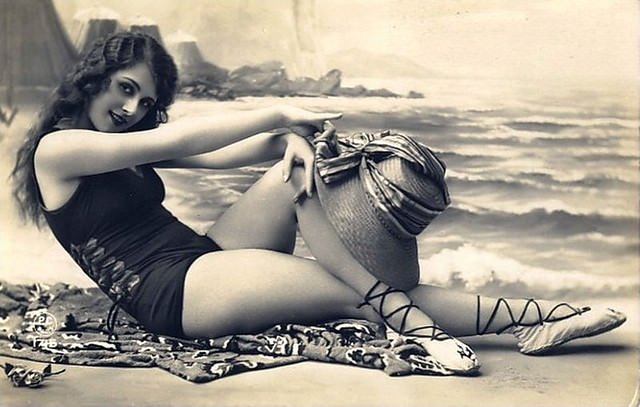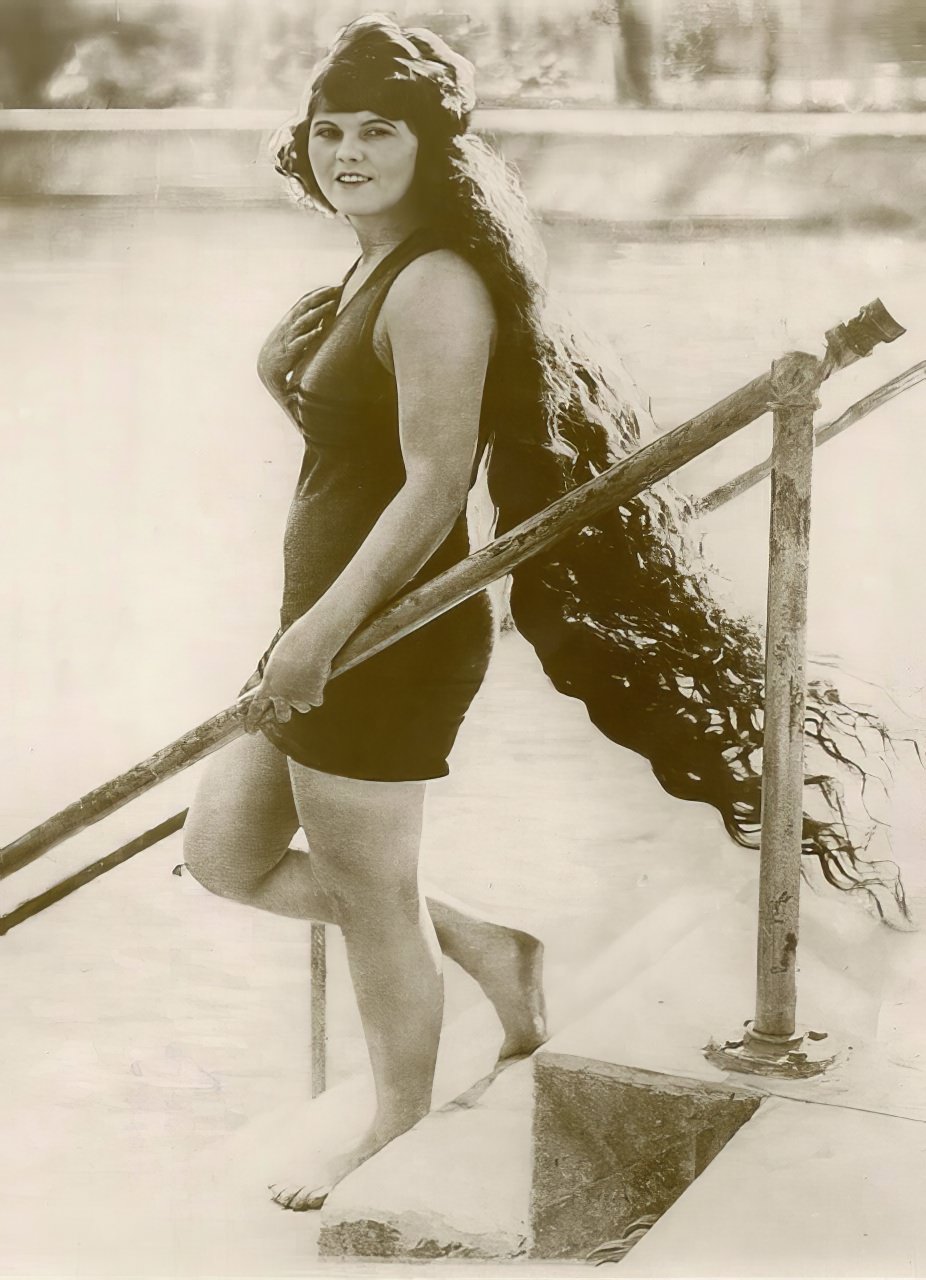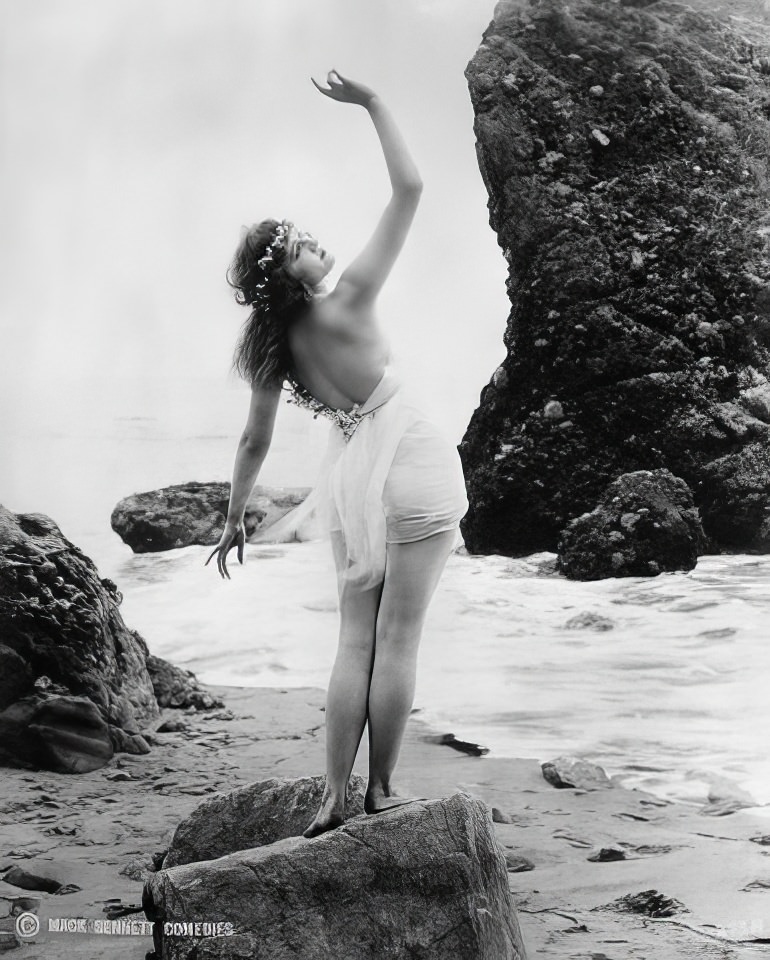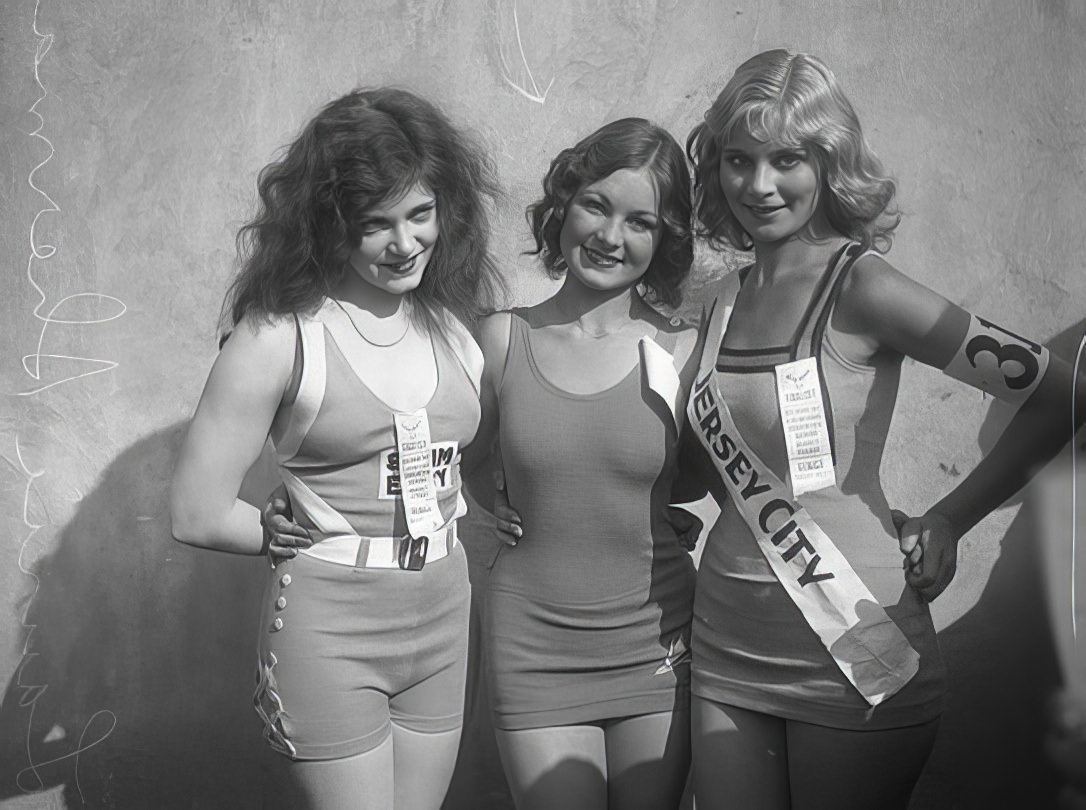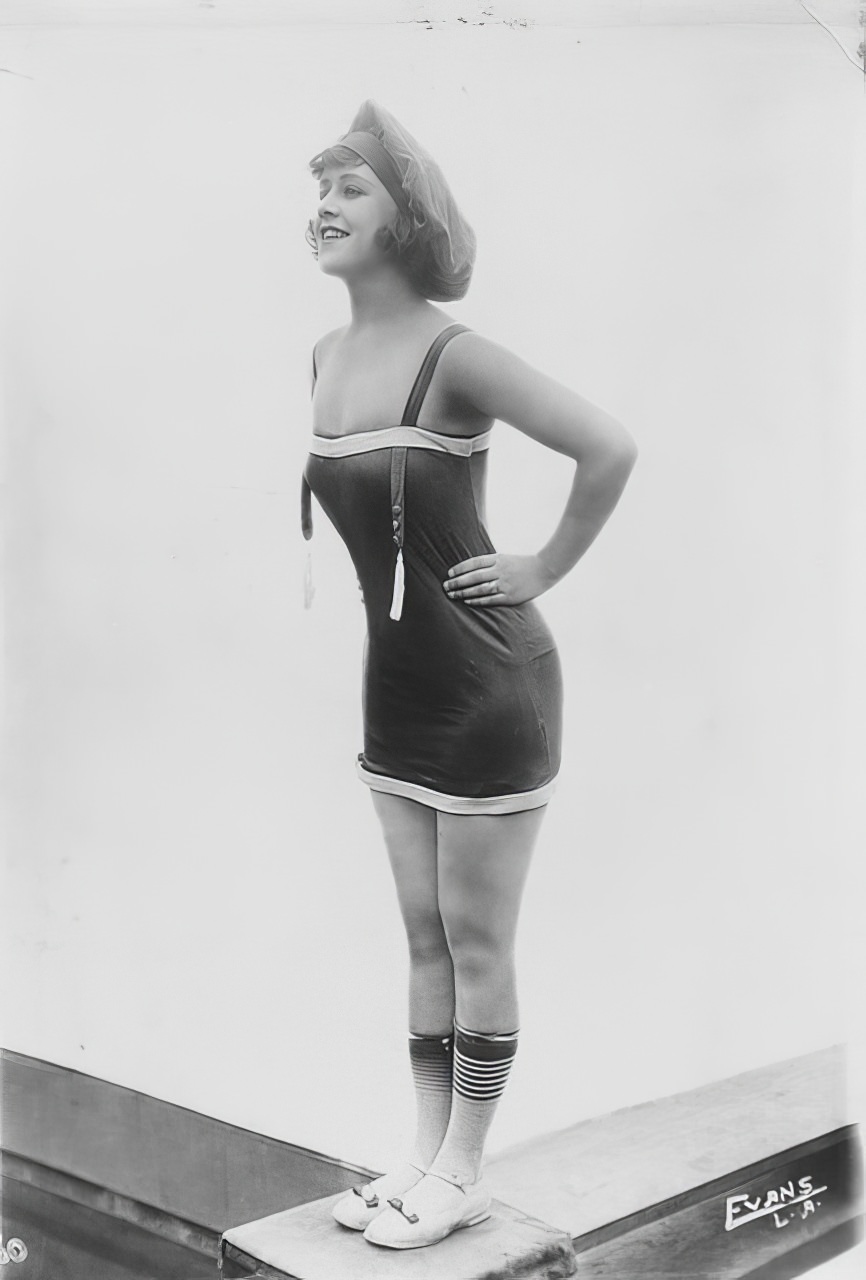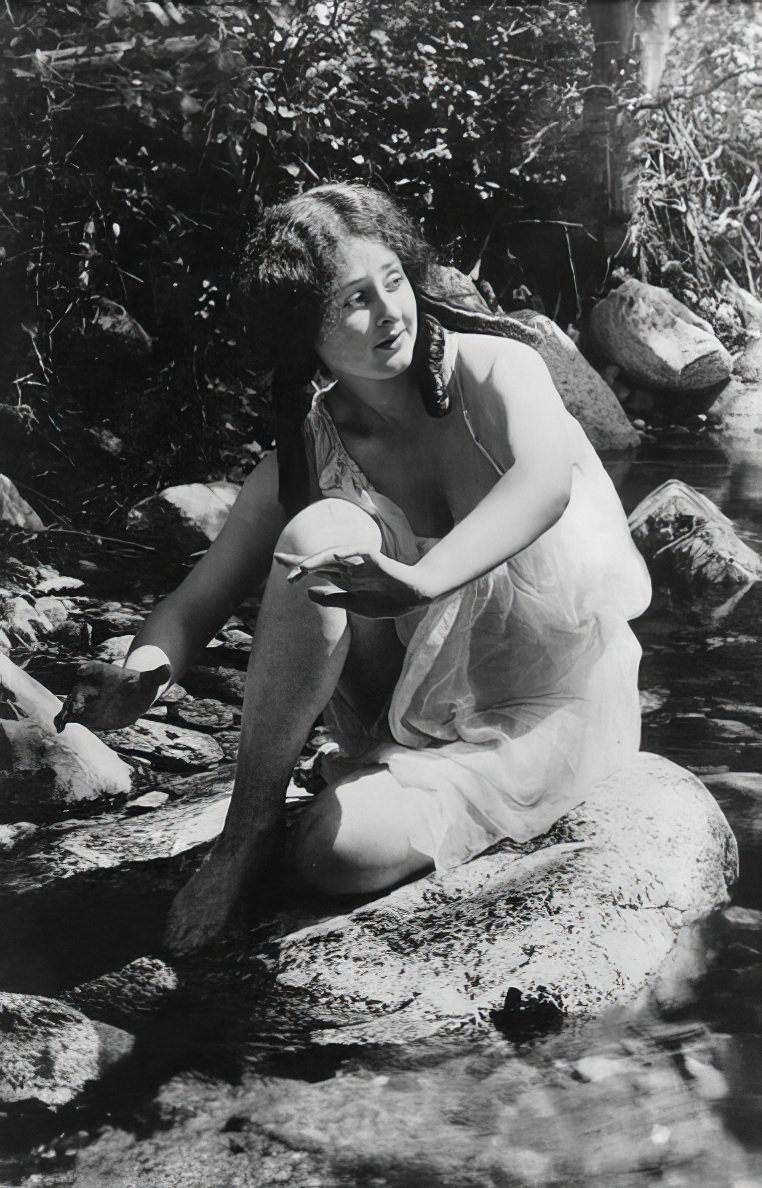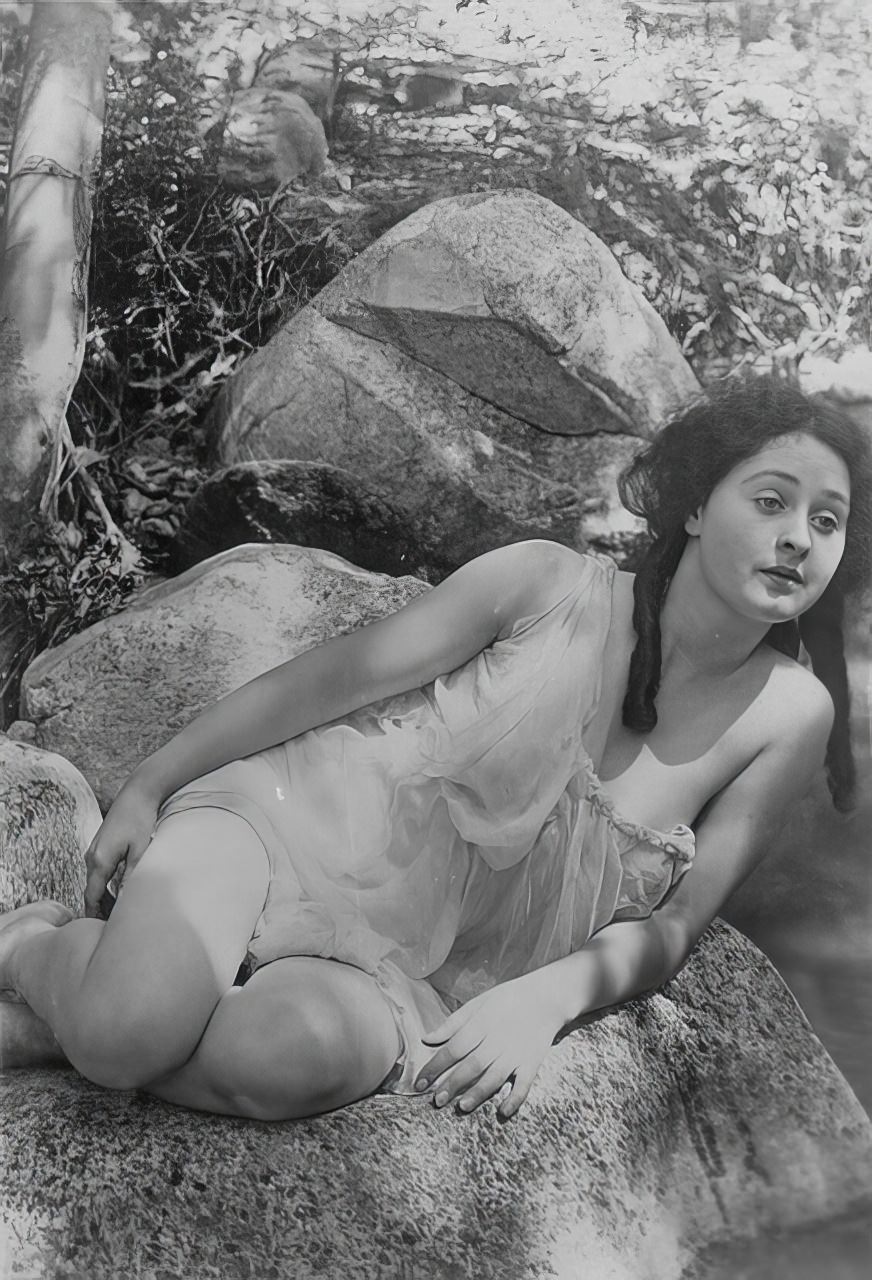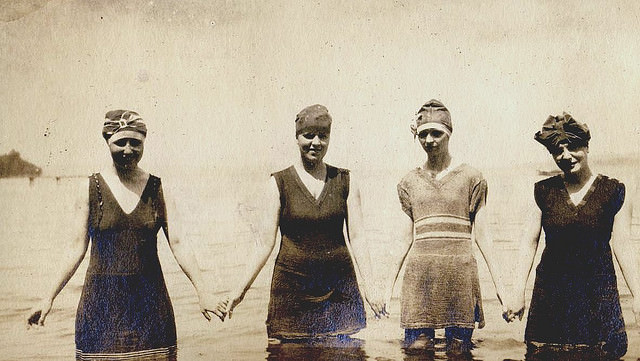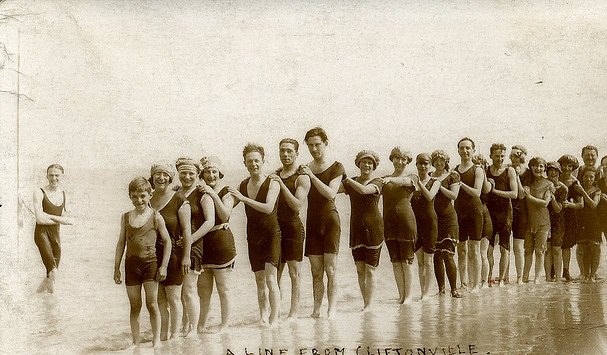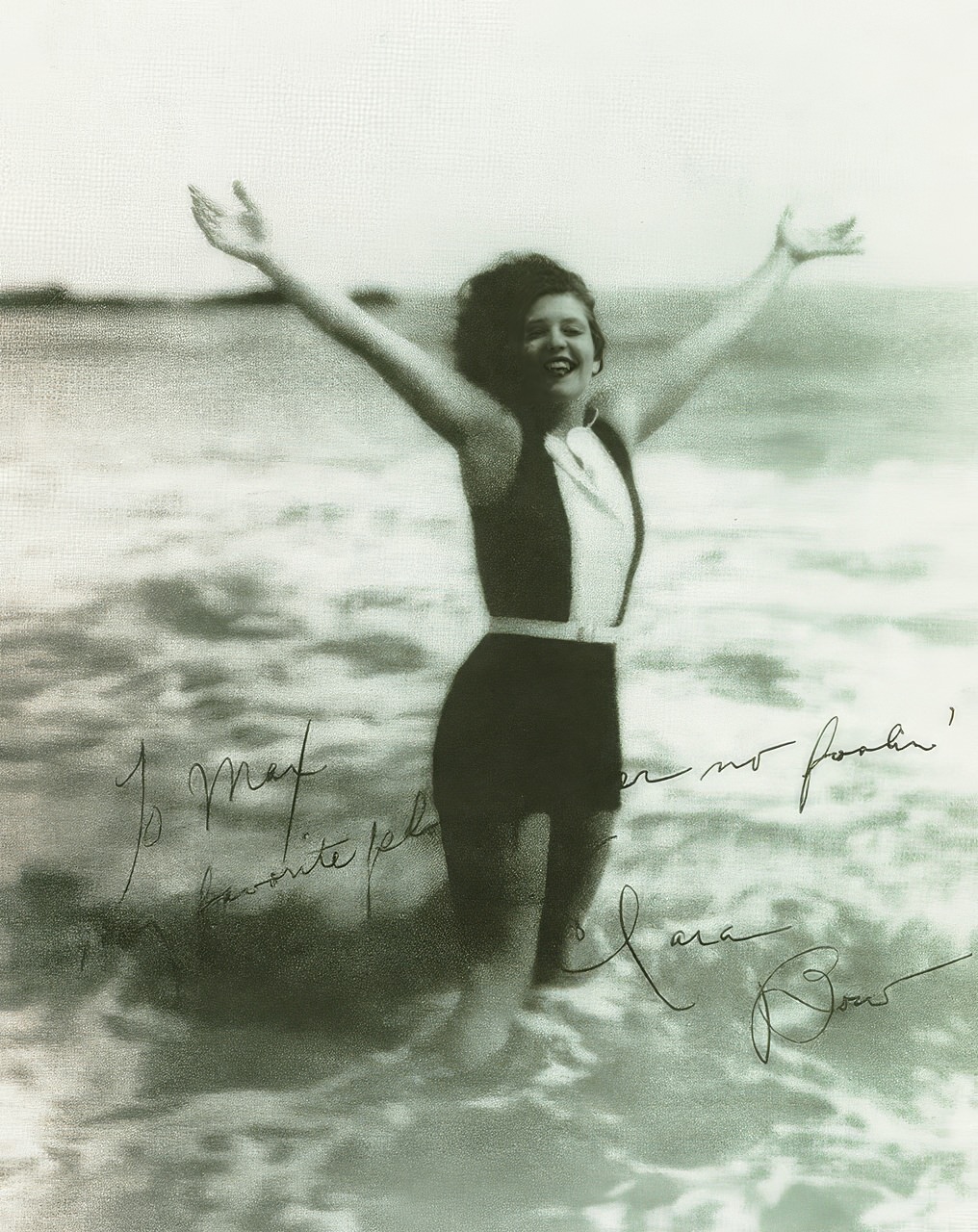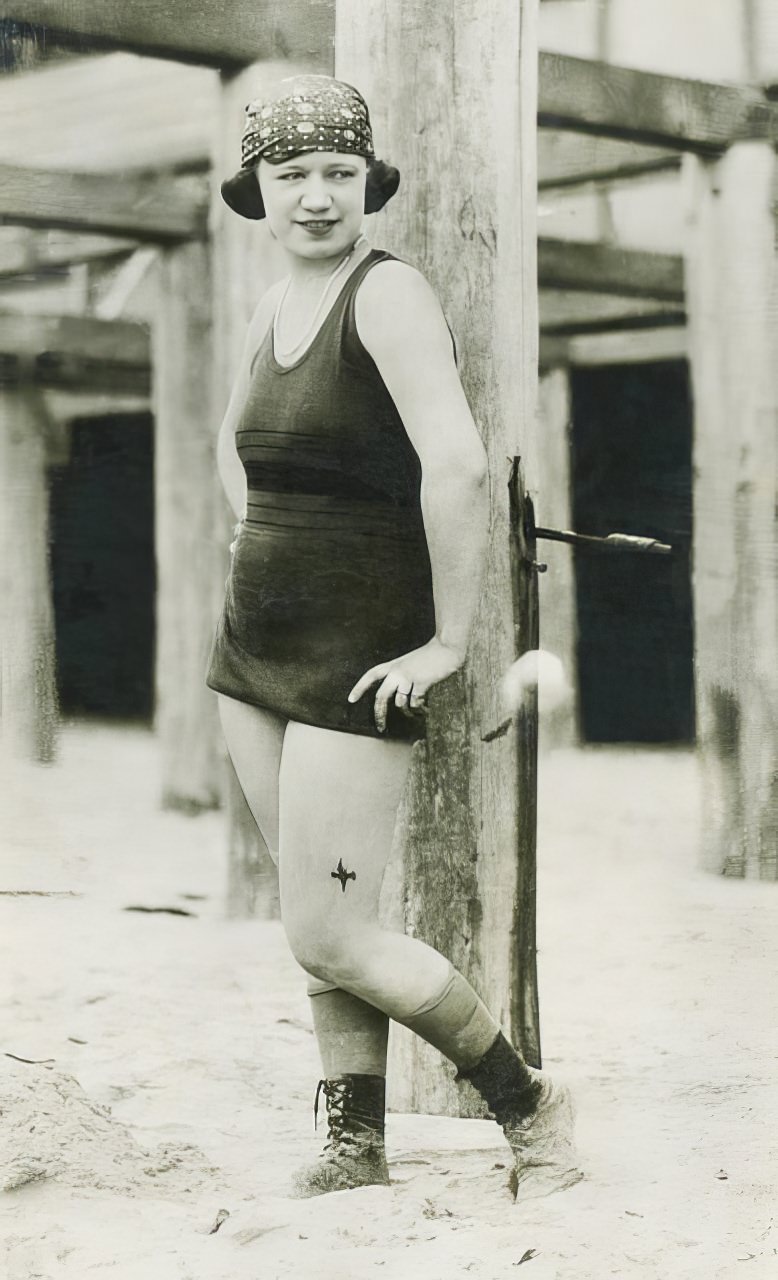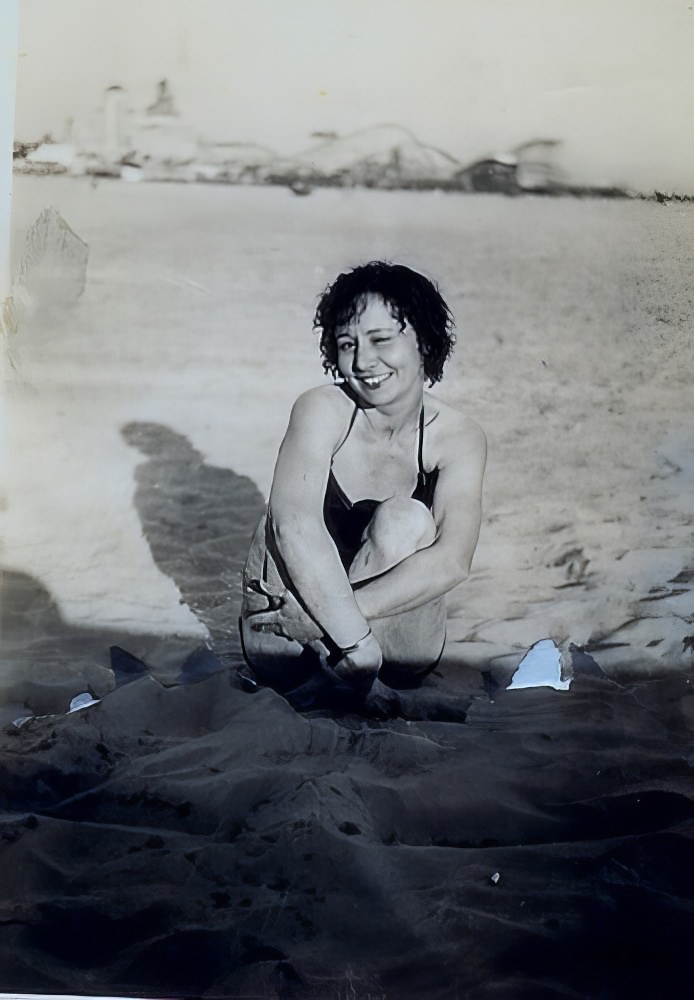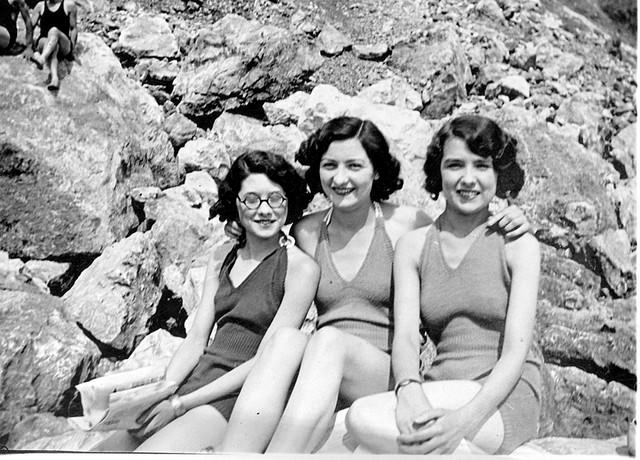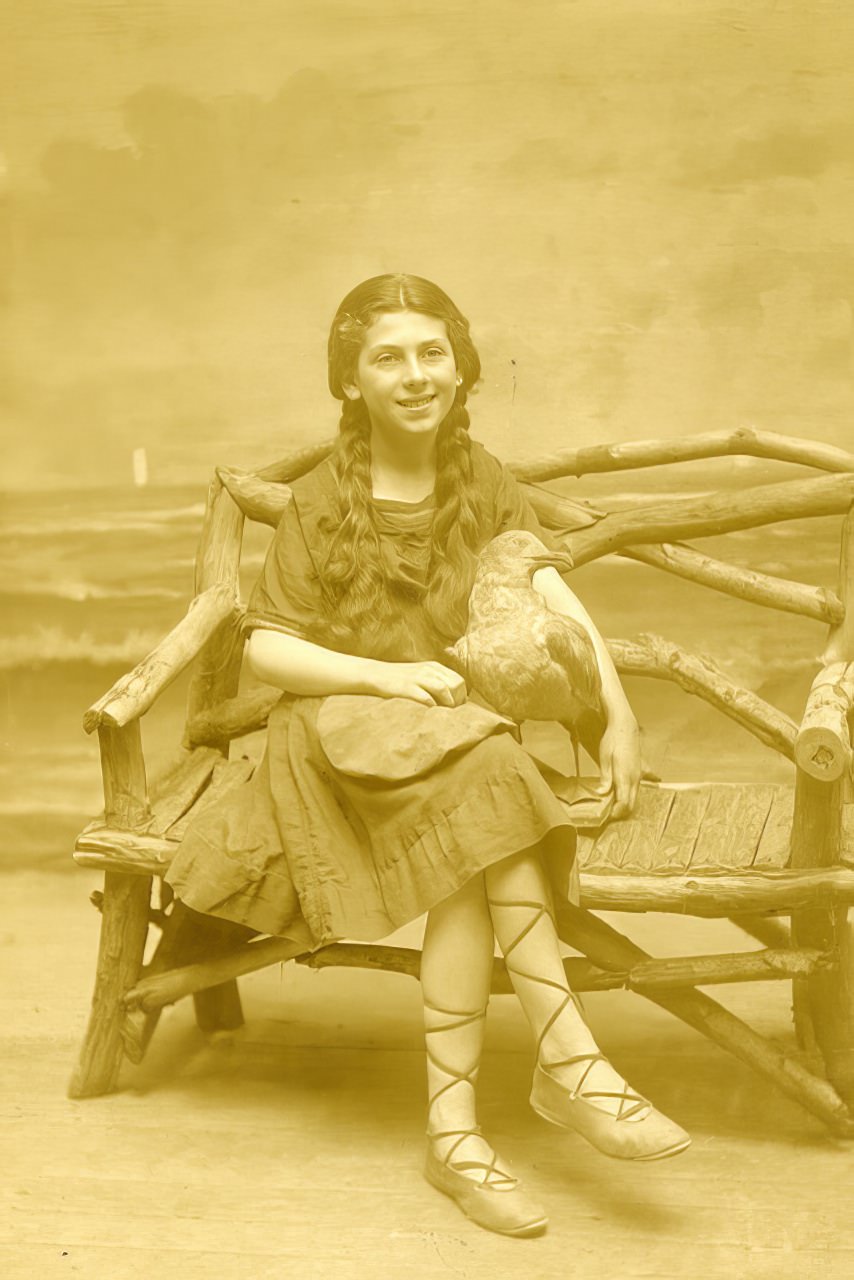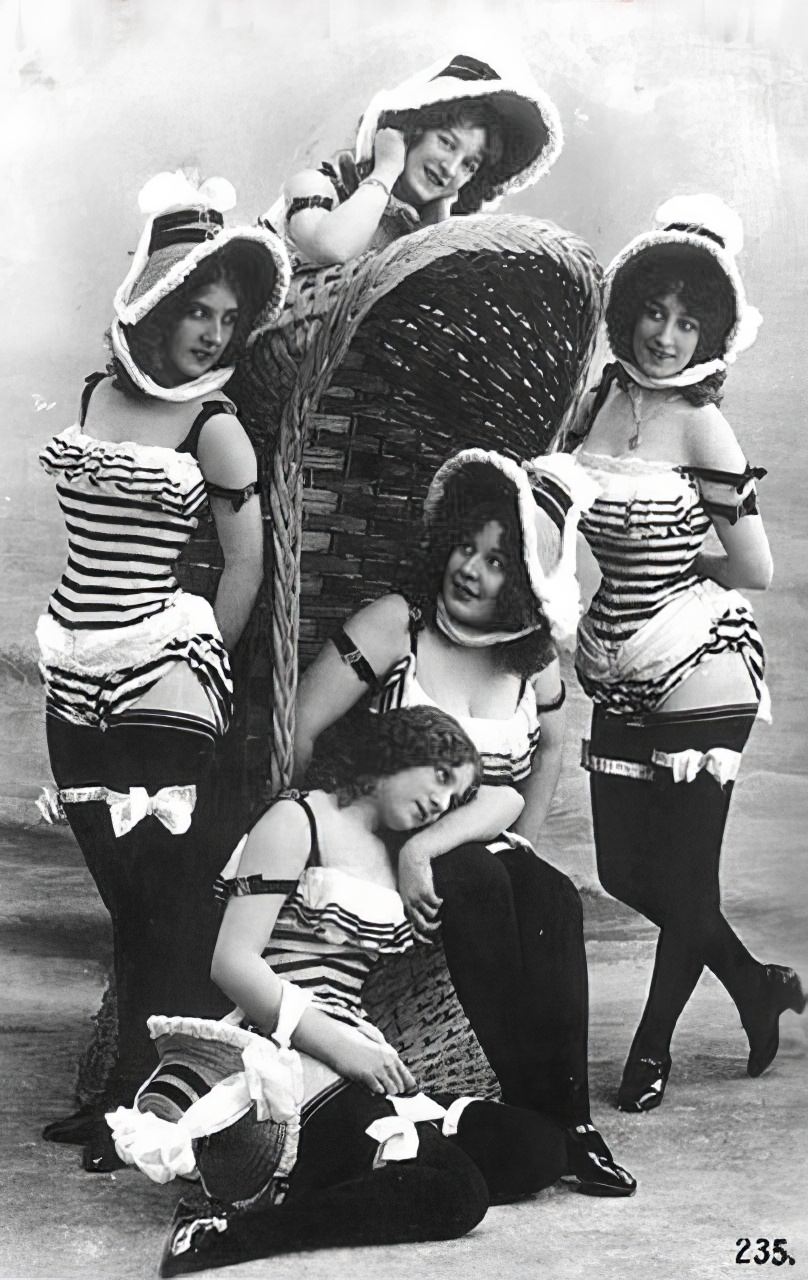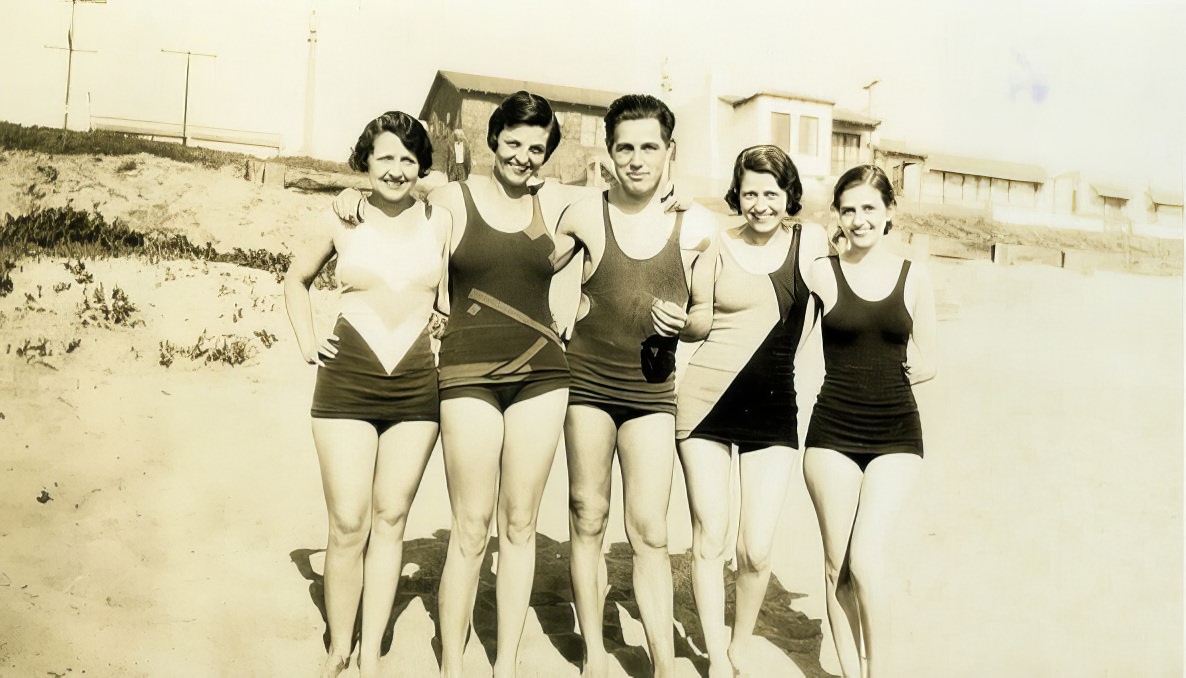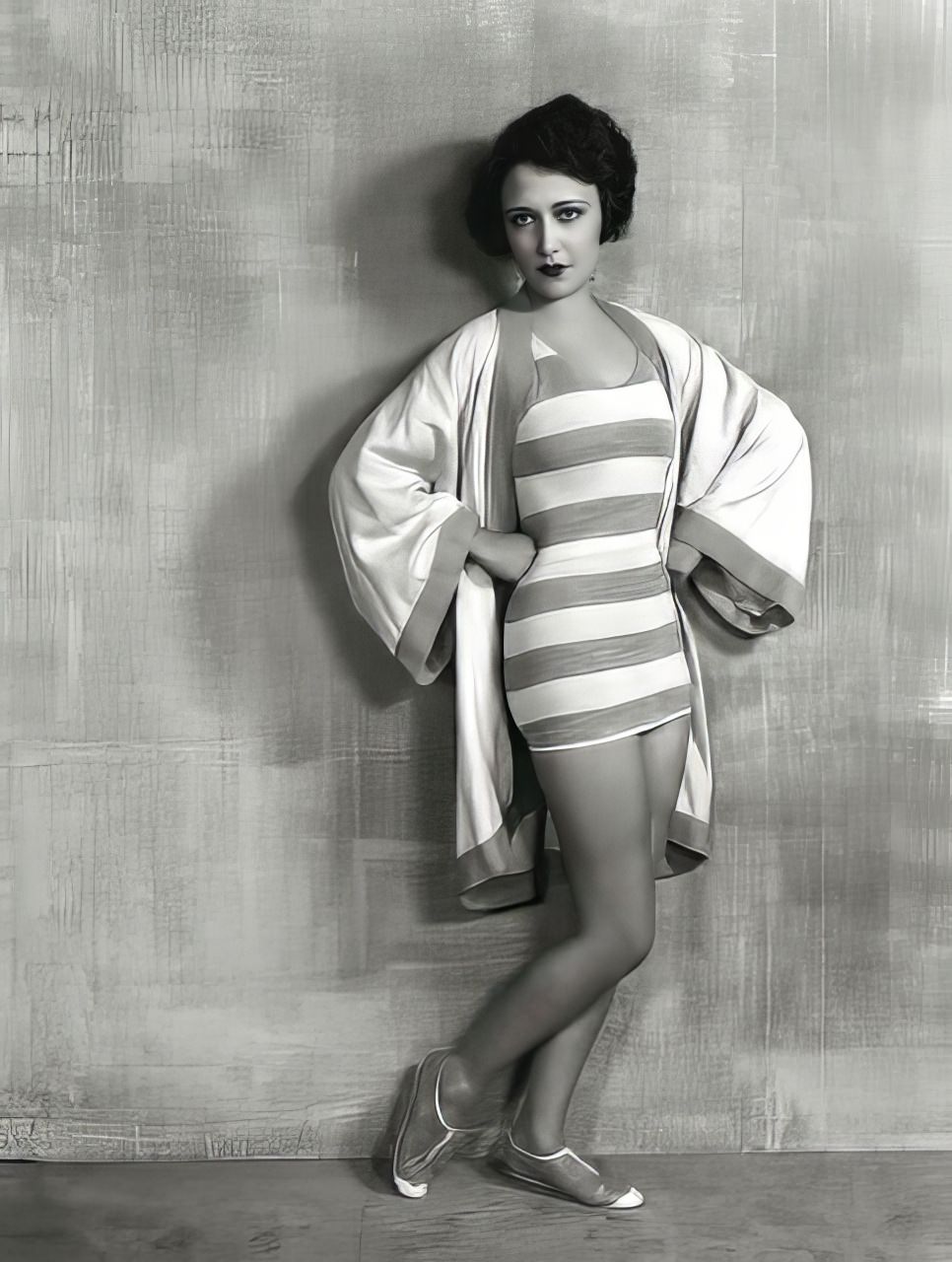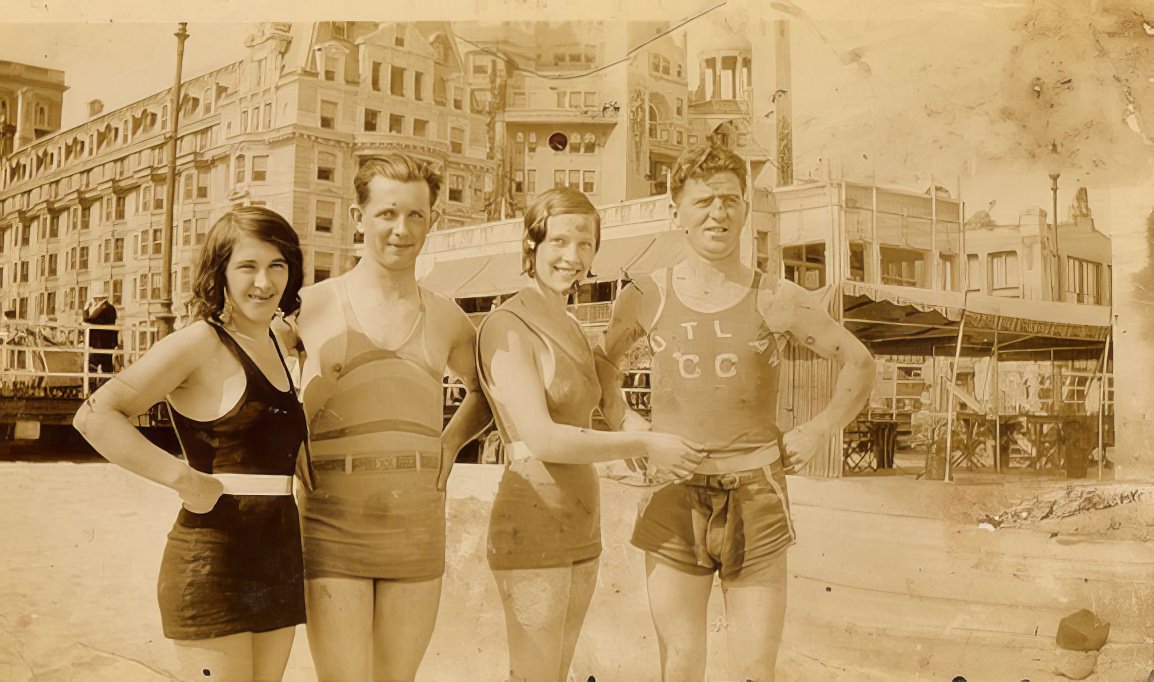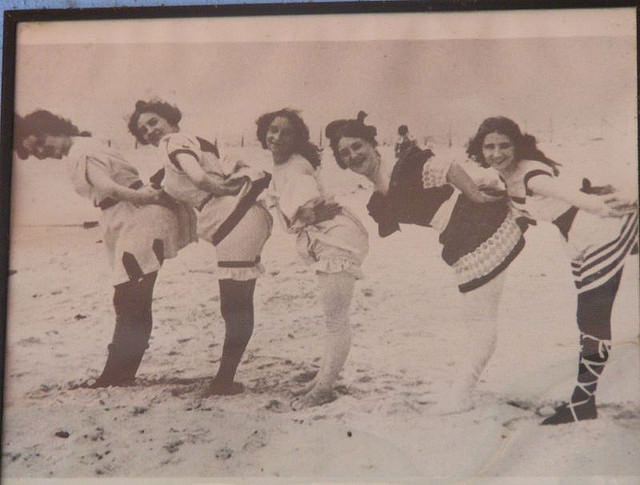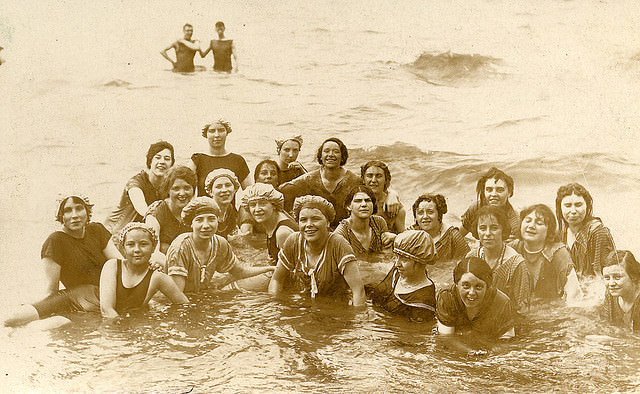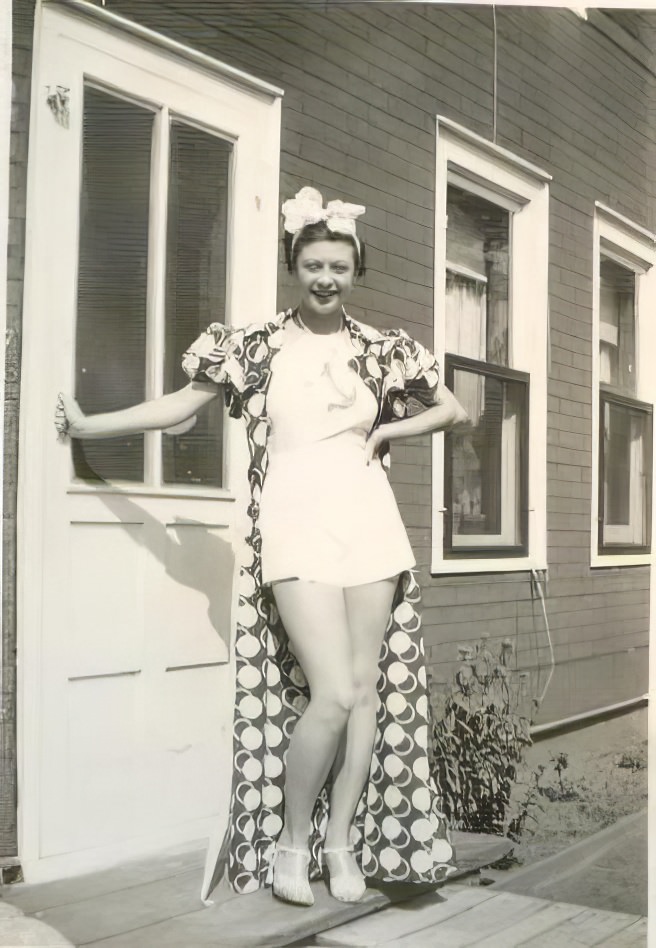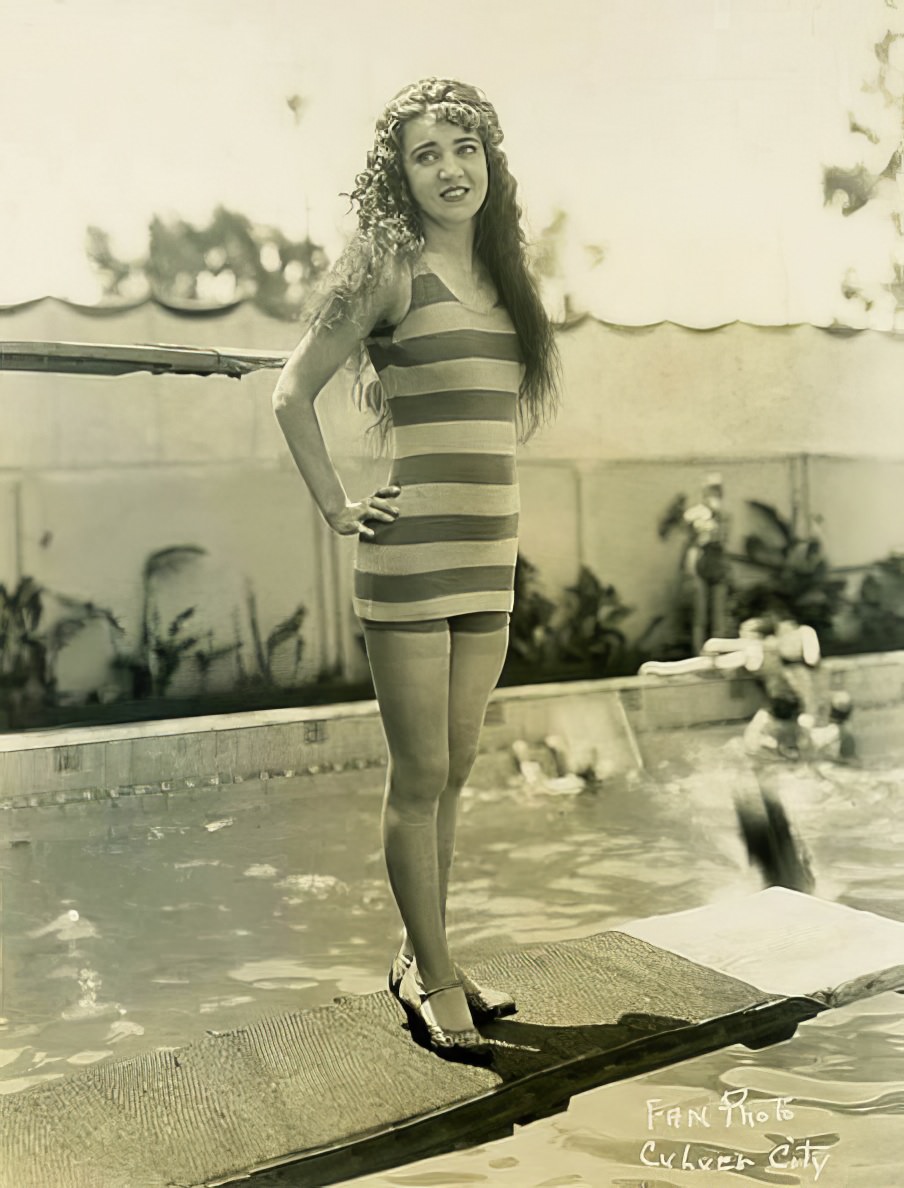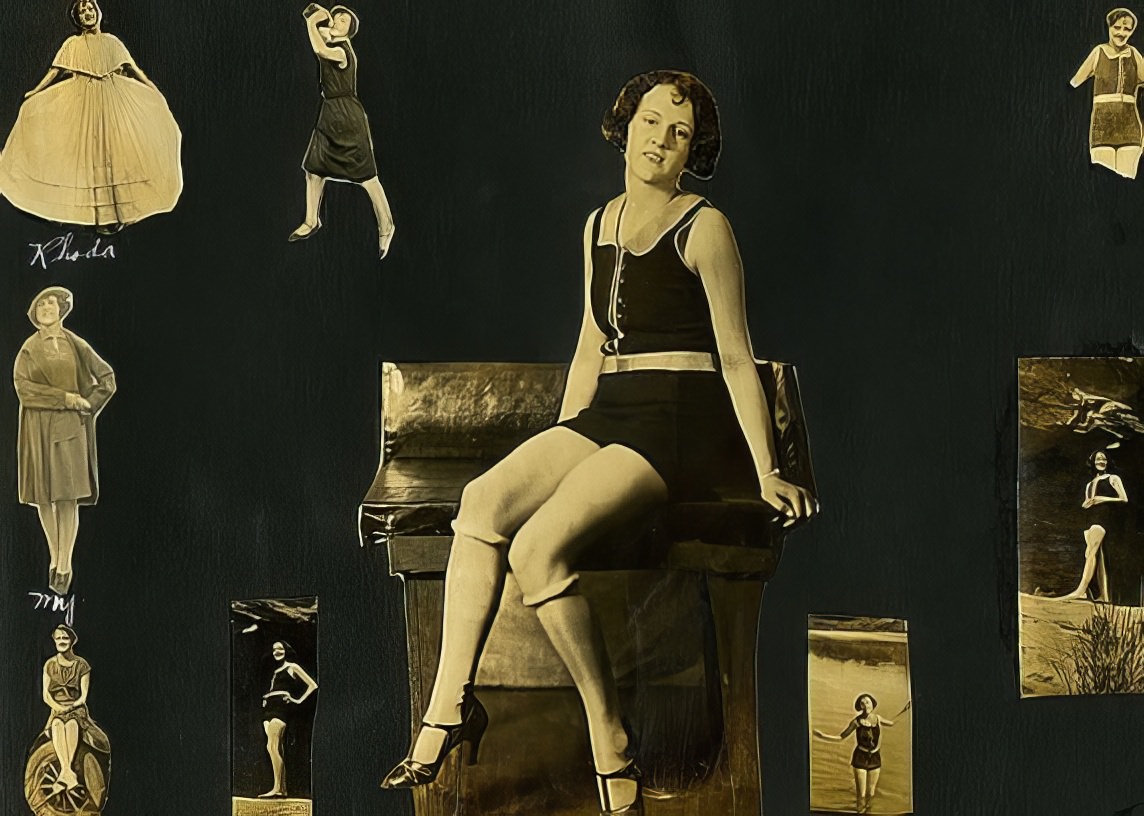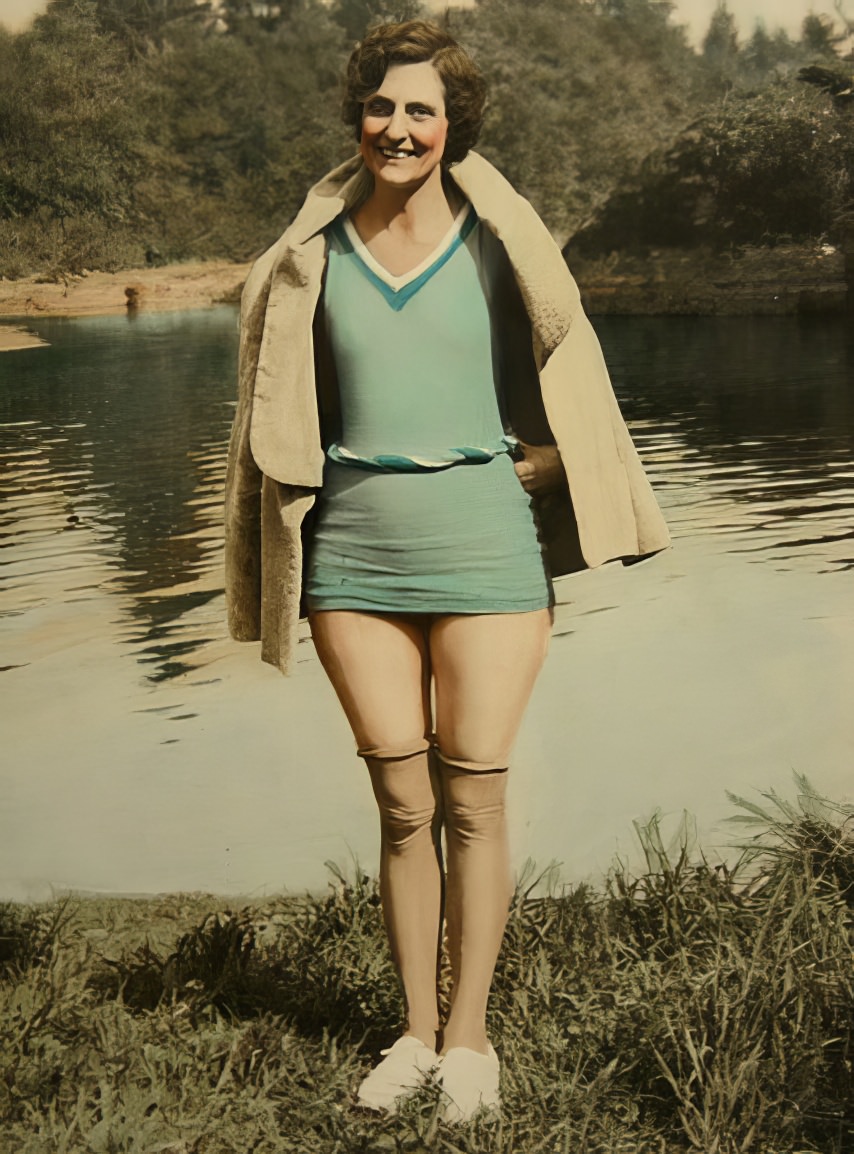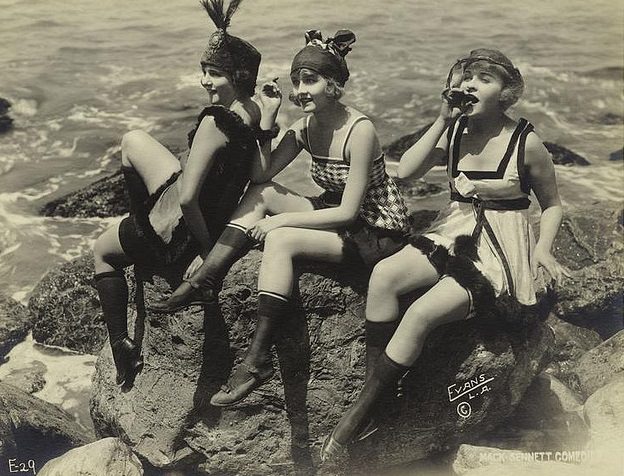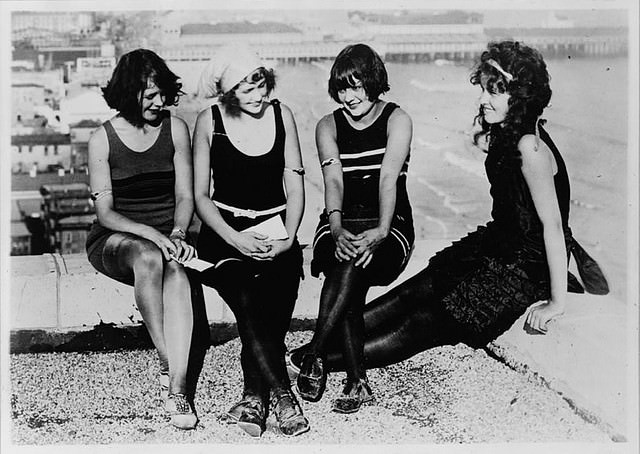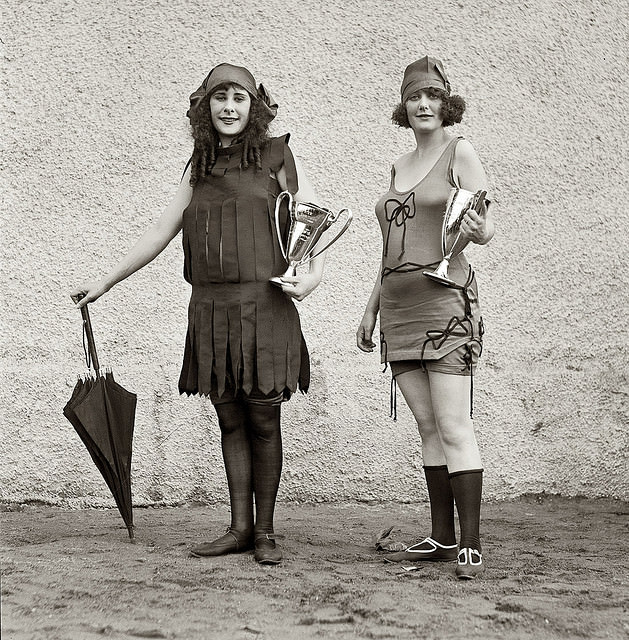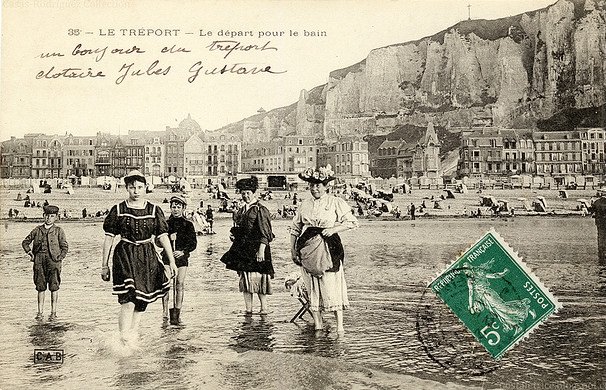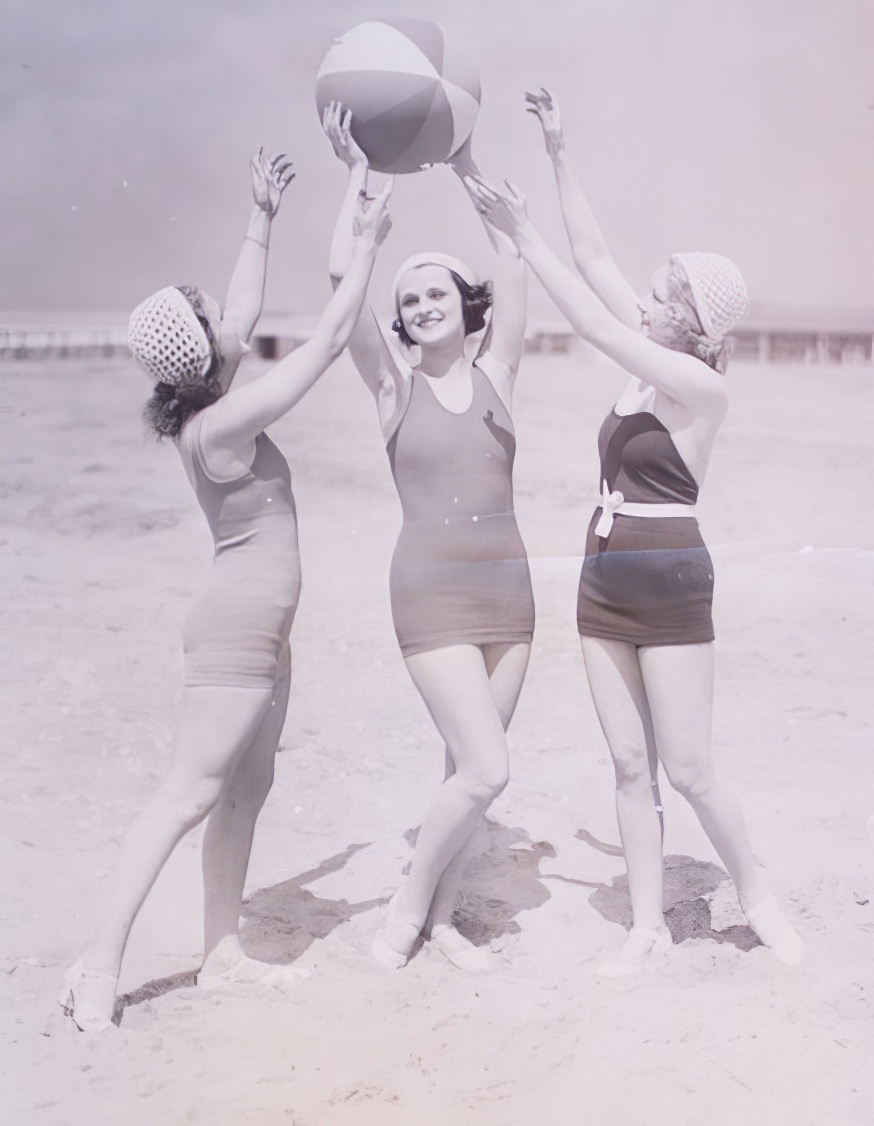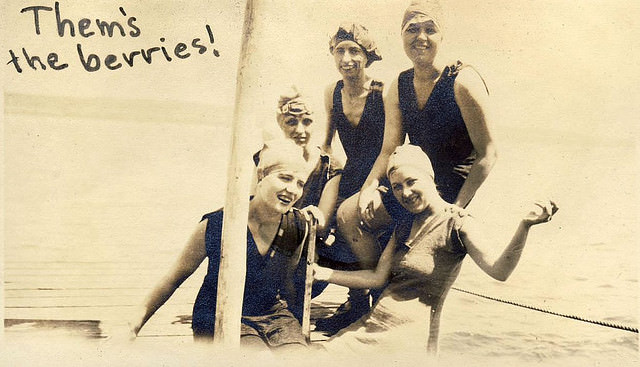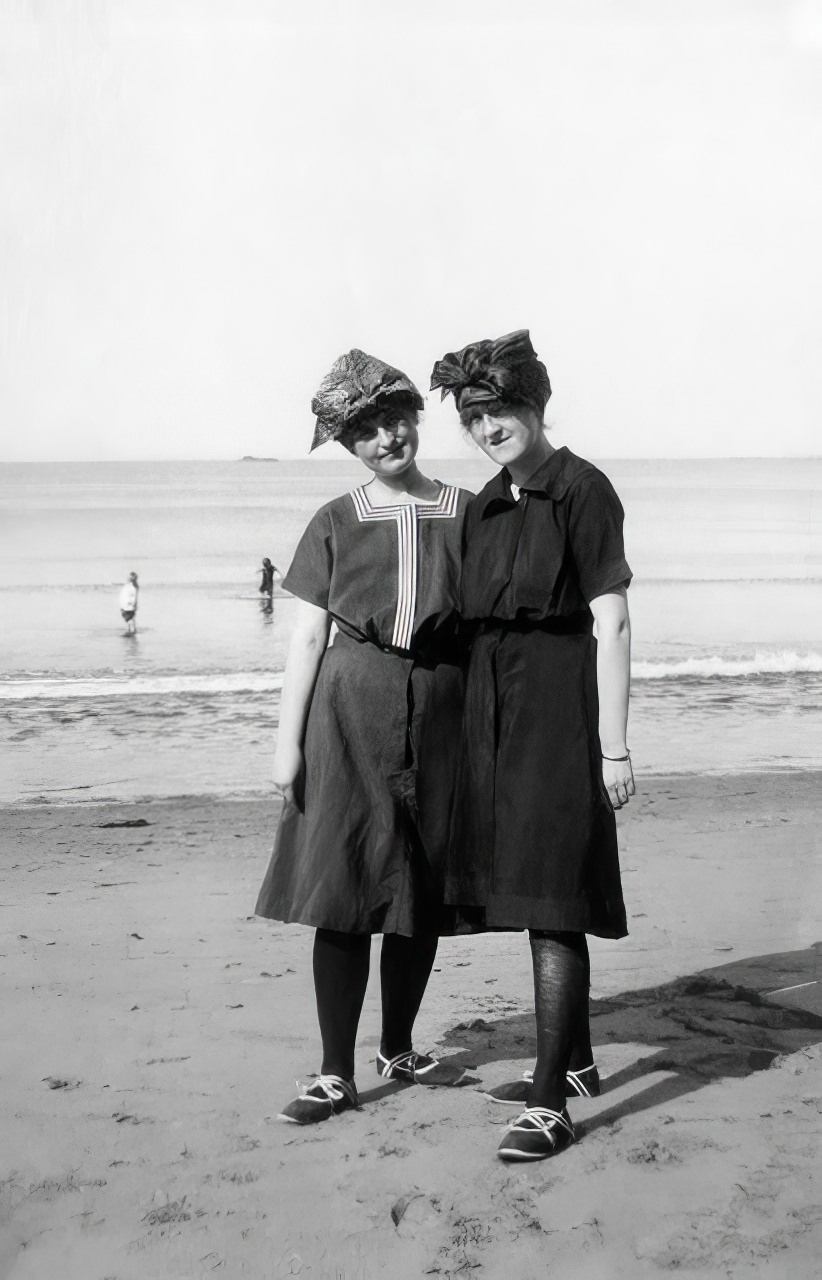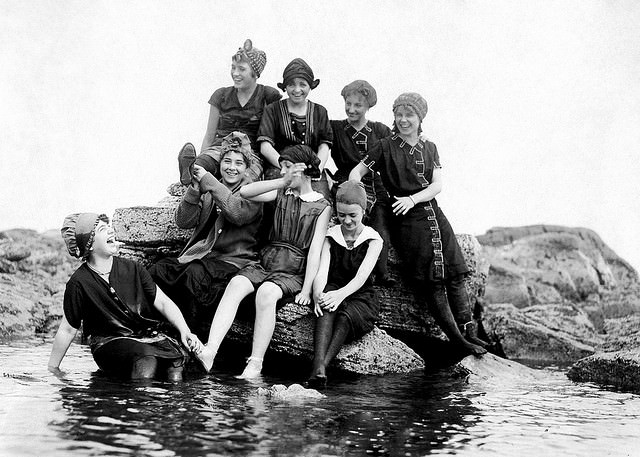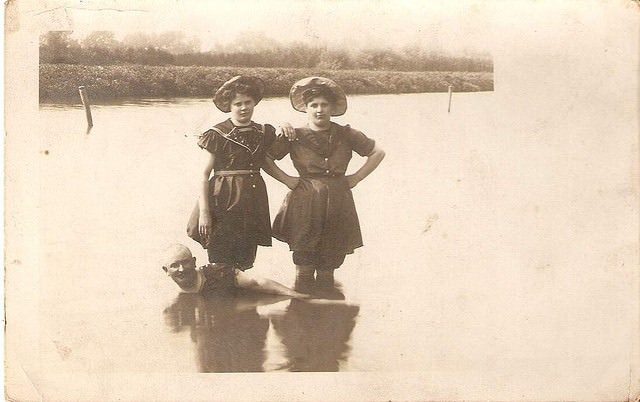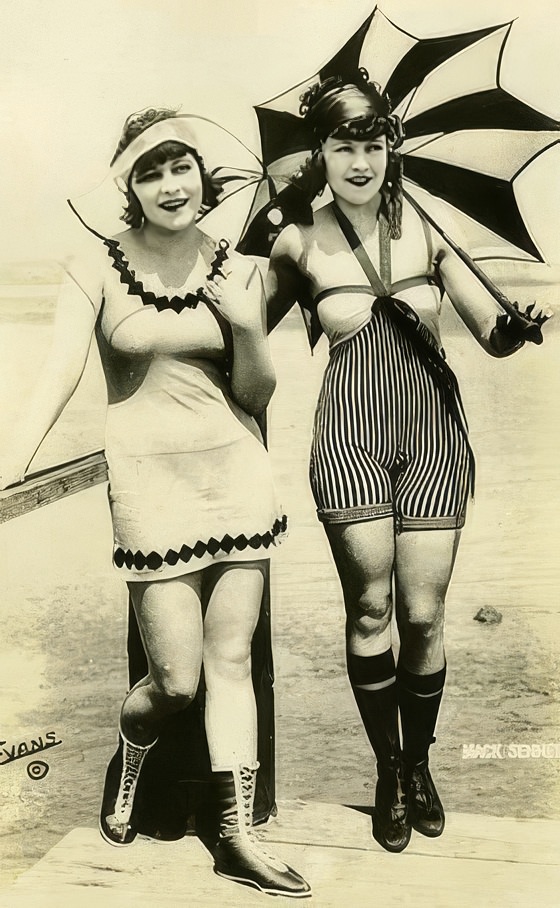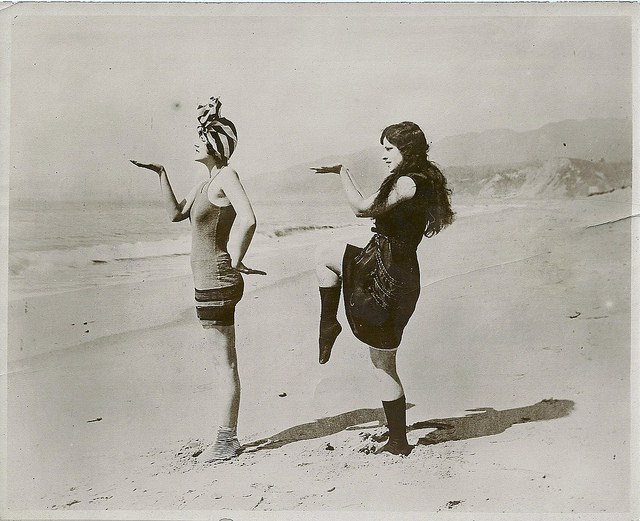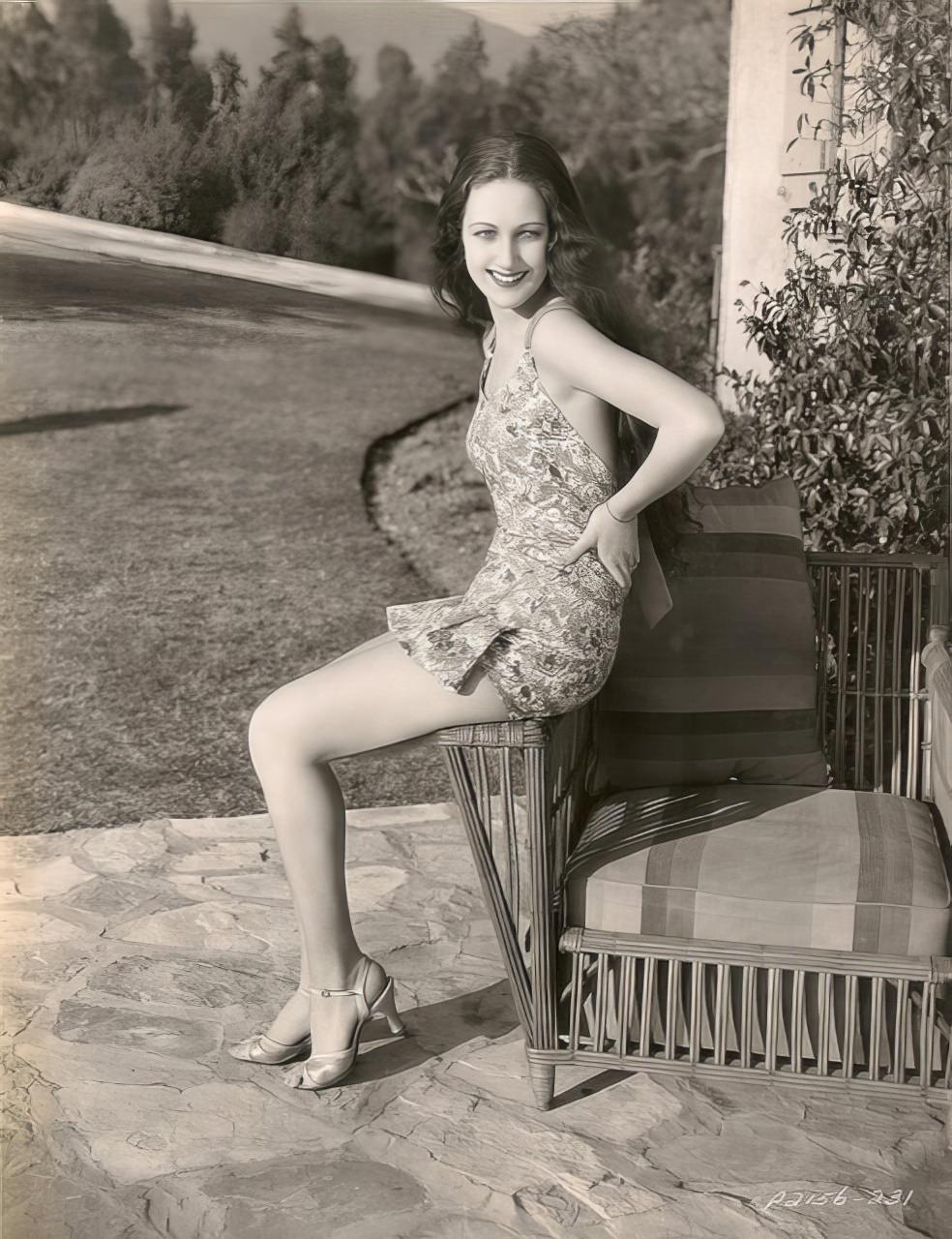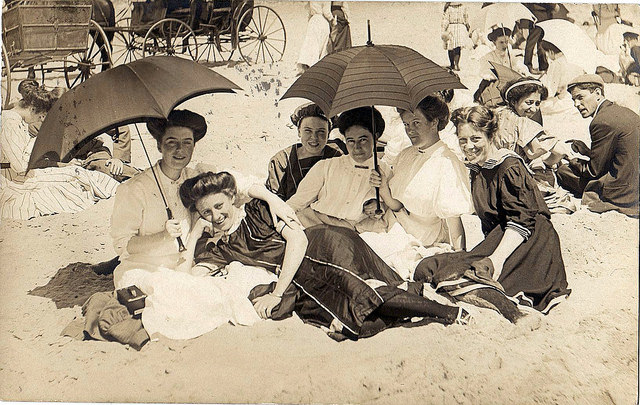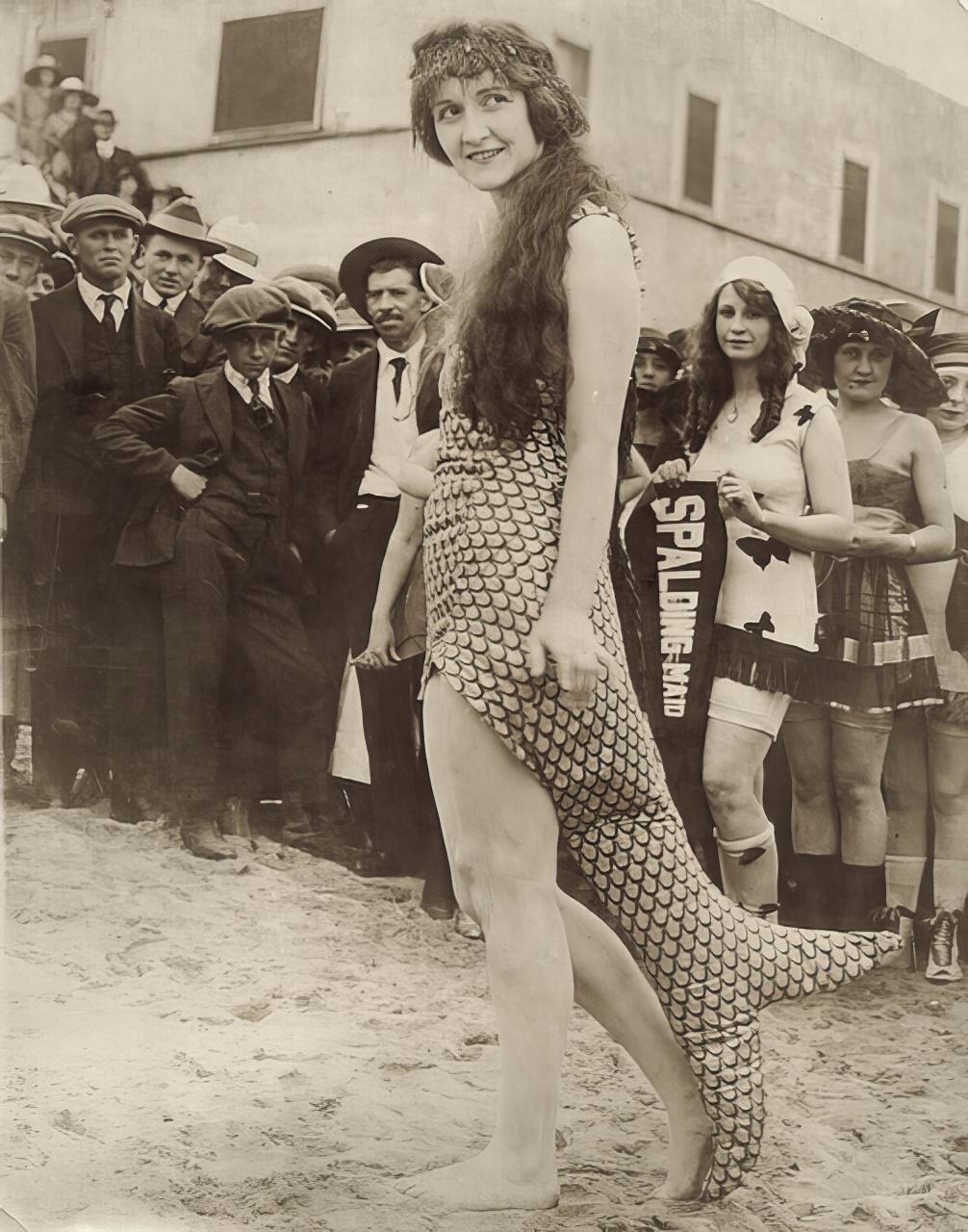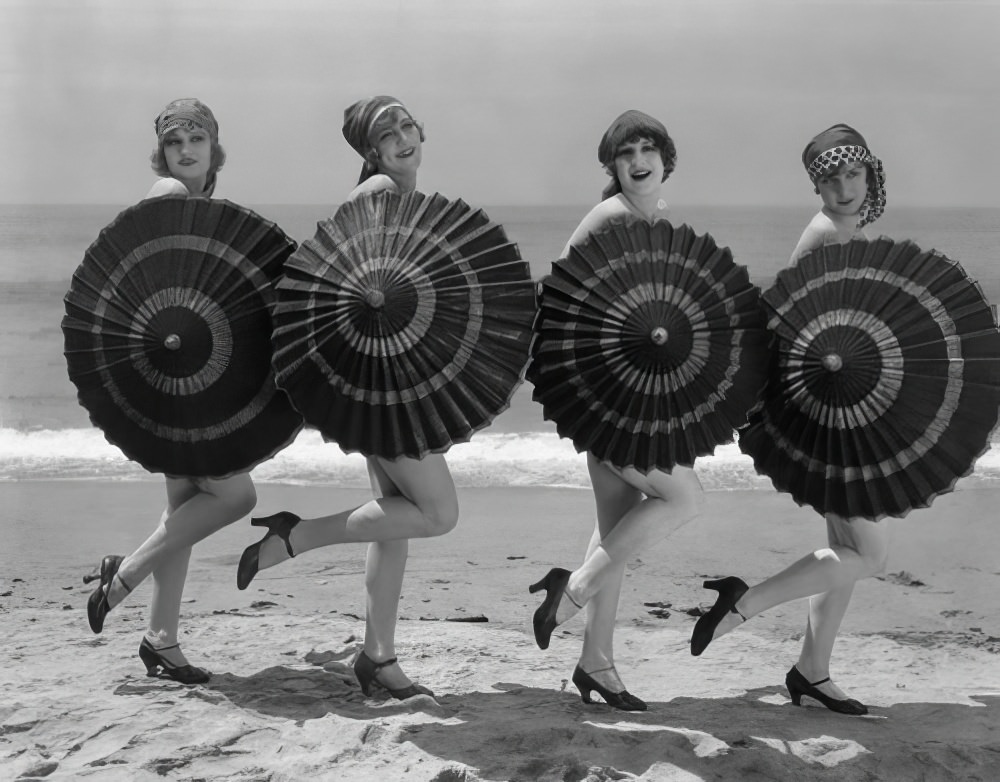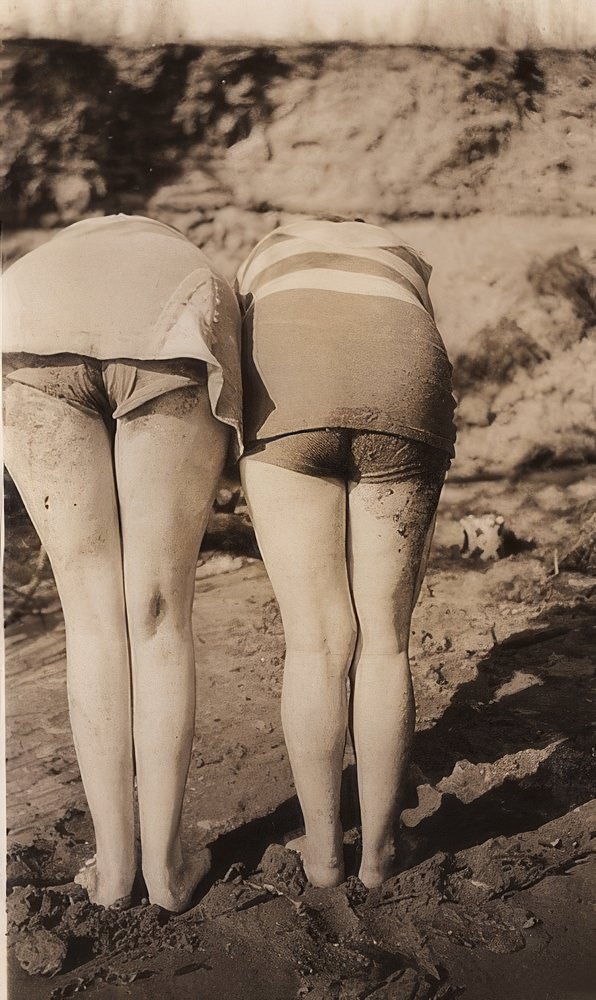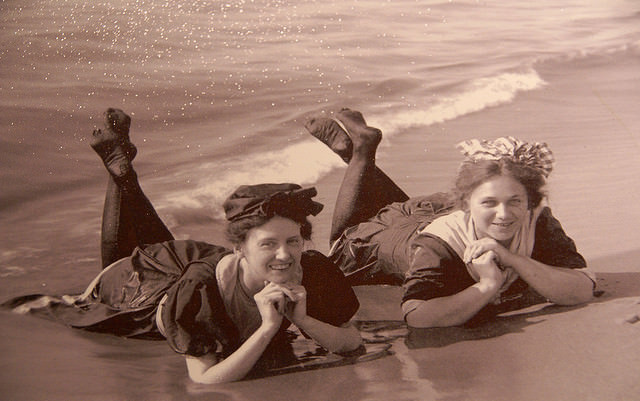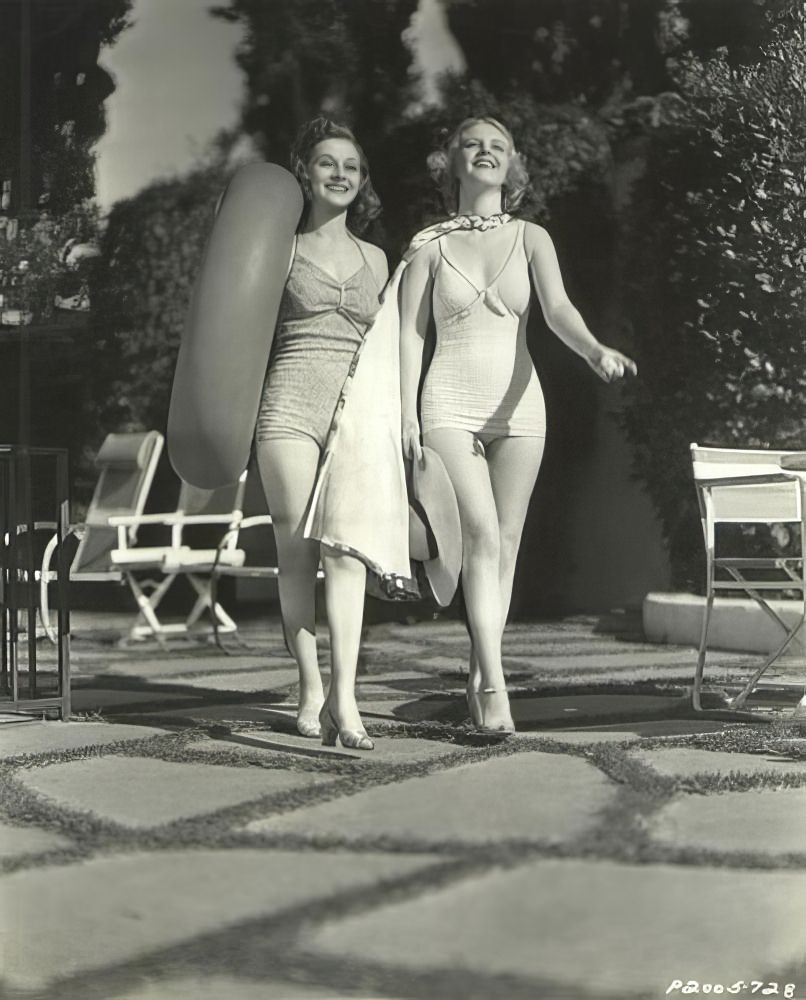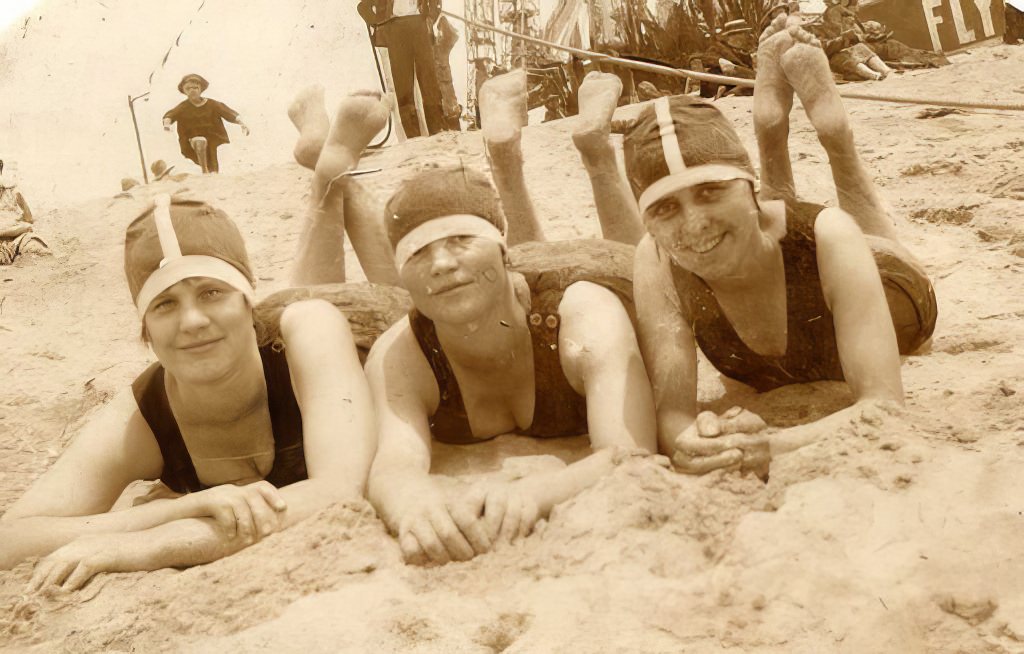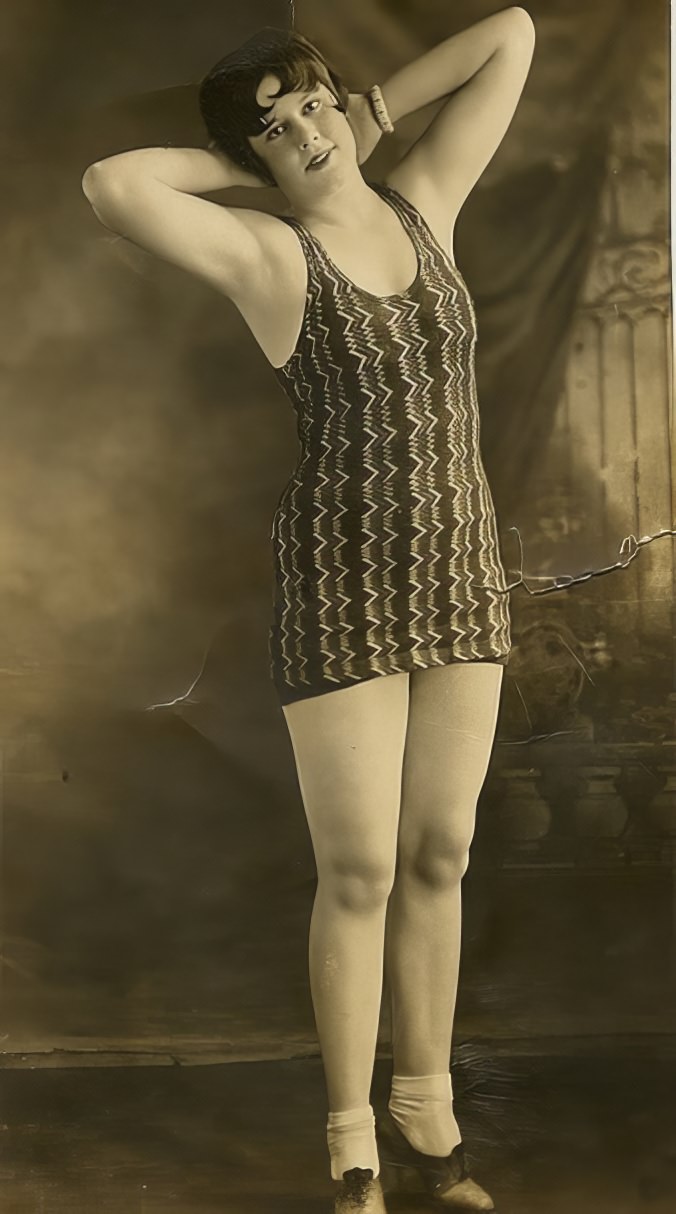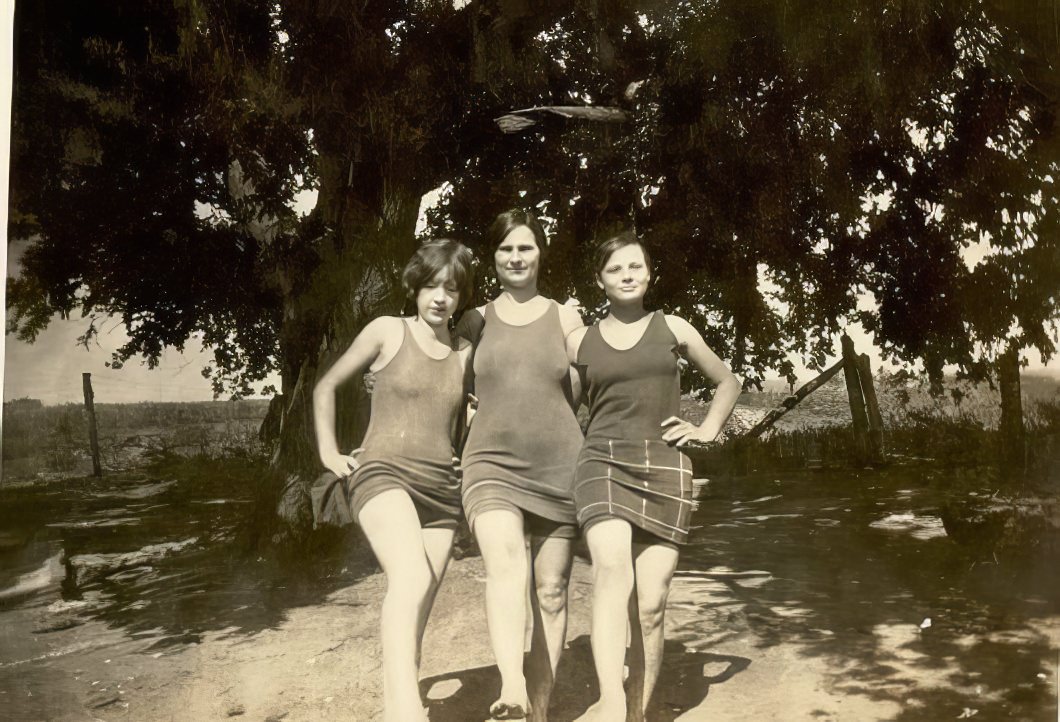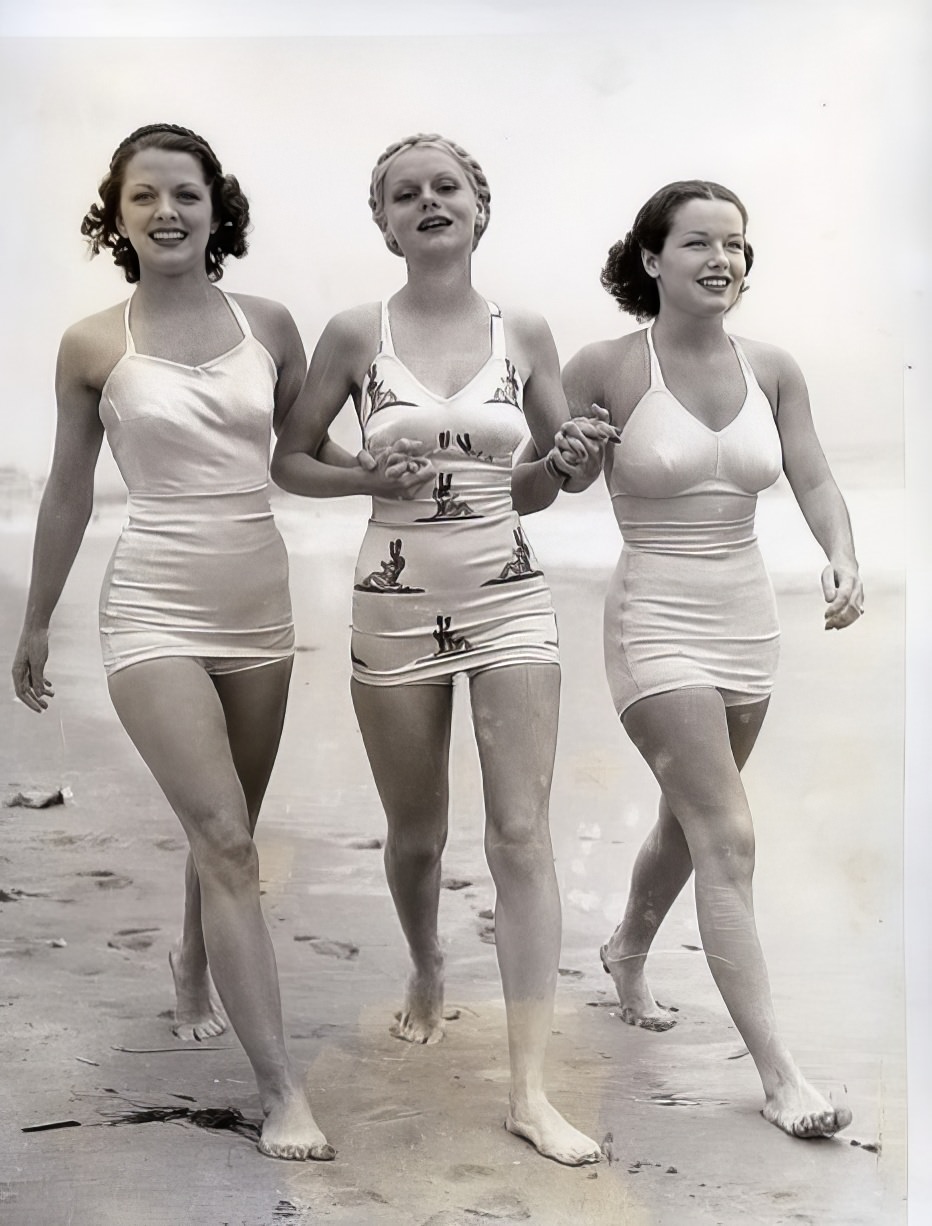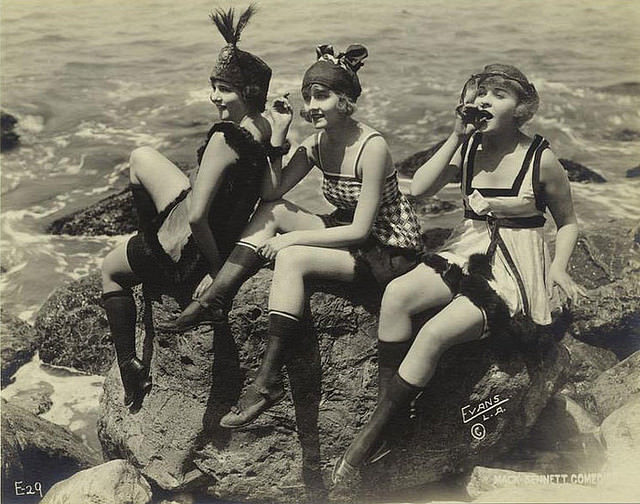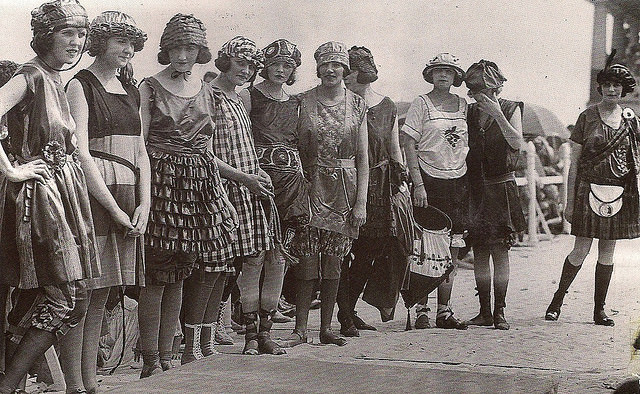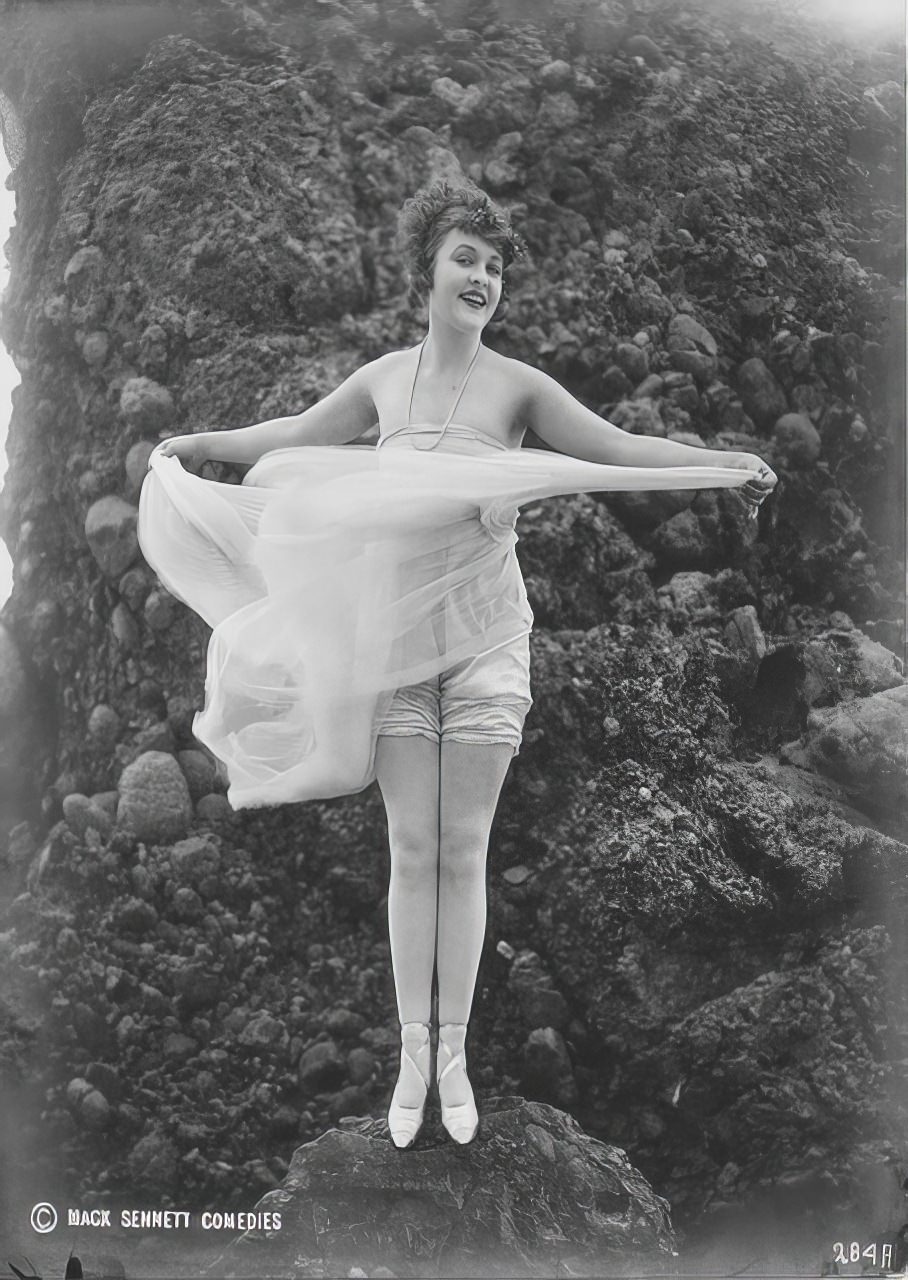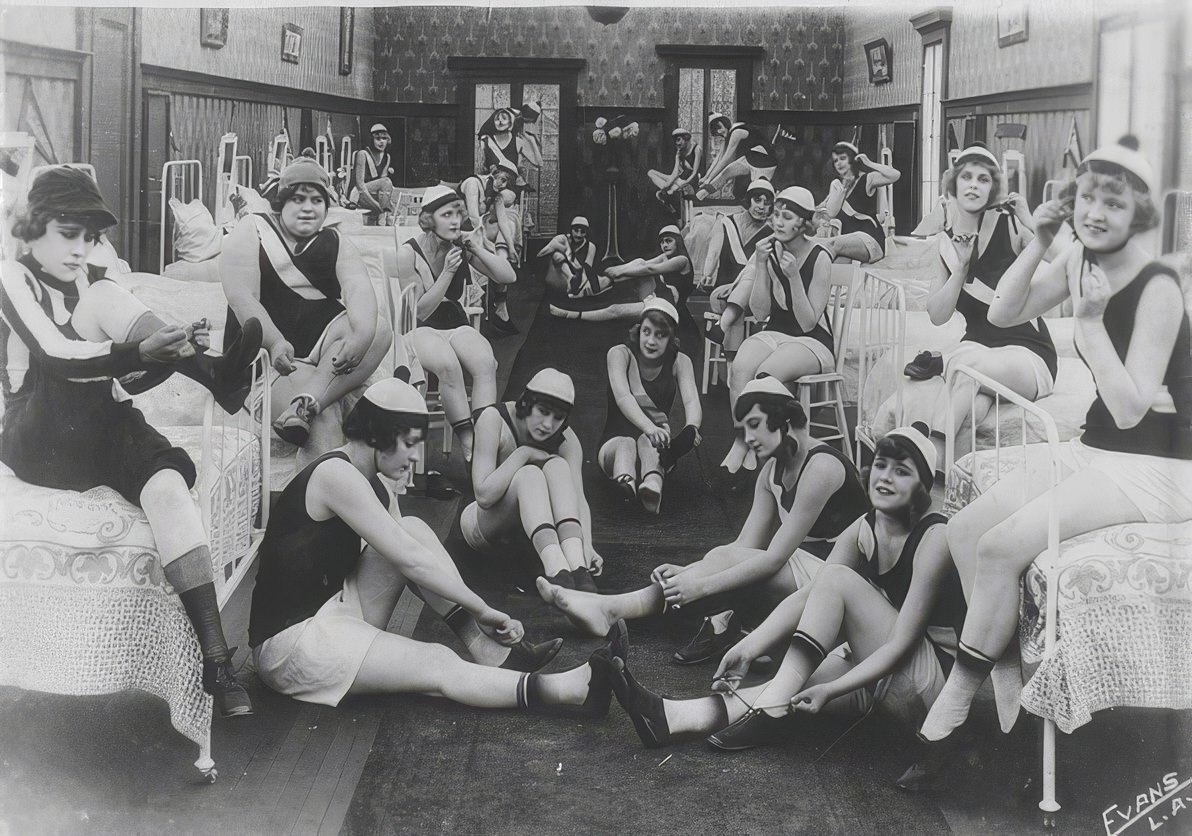In the early 1900s, going to the beach was a very different experience than it is today. Swimsuits, especially for women, were a far cry from the bikinis and one-pieces we see now. The “bathing beauties” of the early 20th century wore outfits that might surprise you. They reflect a time of changing social norms.
From Victorian Modesty to Practicality
In the Victorian era (which ended in 1901), women’s swimwear was all about modesty. These outfits were designed to cover as much skin as possible. They were often made from heavy fabrics like wool or flannel. They were not very practical for swimming.
These Victorian bathing costumes often included long dresses, bloomers (loose-fitting pants), and even stockings. Some women wore shoes in the water. The idea was to protect a woman’s modesty and shield her skin from the sun. A tan was not considered fashionable.
By the early 1900s, things began to change. Women’s swimwear started to become a little more practical, though still quite modest by today’s standards. The heavy dresses were replaced with outfits that allowed for more movement. The amount of fabric used was gradually reduced.
Read more
The Rise of the Princess Style
One popular style of the early 1900s was the “princess” style bathing suit. This typically consisted of a knee-length tunic worn over bloomers or shorts. The tunic was often made of wool or a heavy cotton fabric.
These suits were still quite bulky compared to modern swimwear. They could become heavy and waterlogged when wet. They were designed more for wading in the water than for serious swimming. They provided coverage.
The princess style suits often had short sleeves and a relatively high neckline. They sometimes featured decorative elements like sailor collars or stripes. These details added a touch of fashion to the otherwise practical garments. They were often dark in color.
Up until the early 1900s, women’s activities in the water were quite limited. They might wade in the shallows or jump over waves while holding onto a rope attached to a buoy. These ropes were common at beaches.
This began to change around 1915. Women started to participate in the actual sport of swimming. This shift had a major impact on swimwear design. It had to become more functional.
As women became more active in the water, they needed swimwear that allowed for greater freedom of movement. The heavy, restrictive outfits of the past were no longer suitable. A new era of swimwear was beginning. It had to allow for movement.
The One-Piece Emerges
By the early 1920s, a new style of swimwear had emerged: the one-piece bathing suit. This was a significant departure from the multi-piece outfits of the past. It was a major step towards modern swimwear.
These early one-piece suits typically featured a long top that extended over a pair of shorts. The top often had short sleeves or was sleeveless. The neckline was usually relatively high. It was still a modest design.
The one-piece suits were often made of knitted wool or jersey fabric. These materials were more form-fitting than previous fabrics. They allowed for a greater range of motion. They clung to the body more.
While these suits were more practical for swimming, they still covered a significant amount of skin. Matching stockings were still often worn, although they were gradually becoming shorter. The evolution continued slowly.


